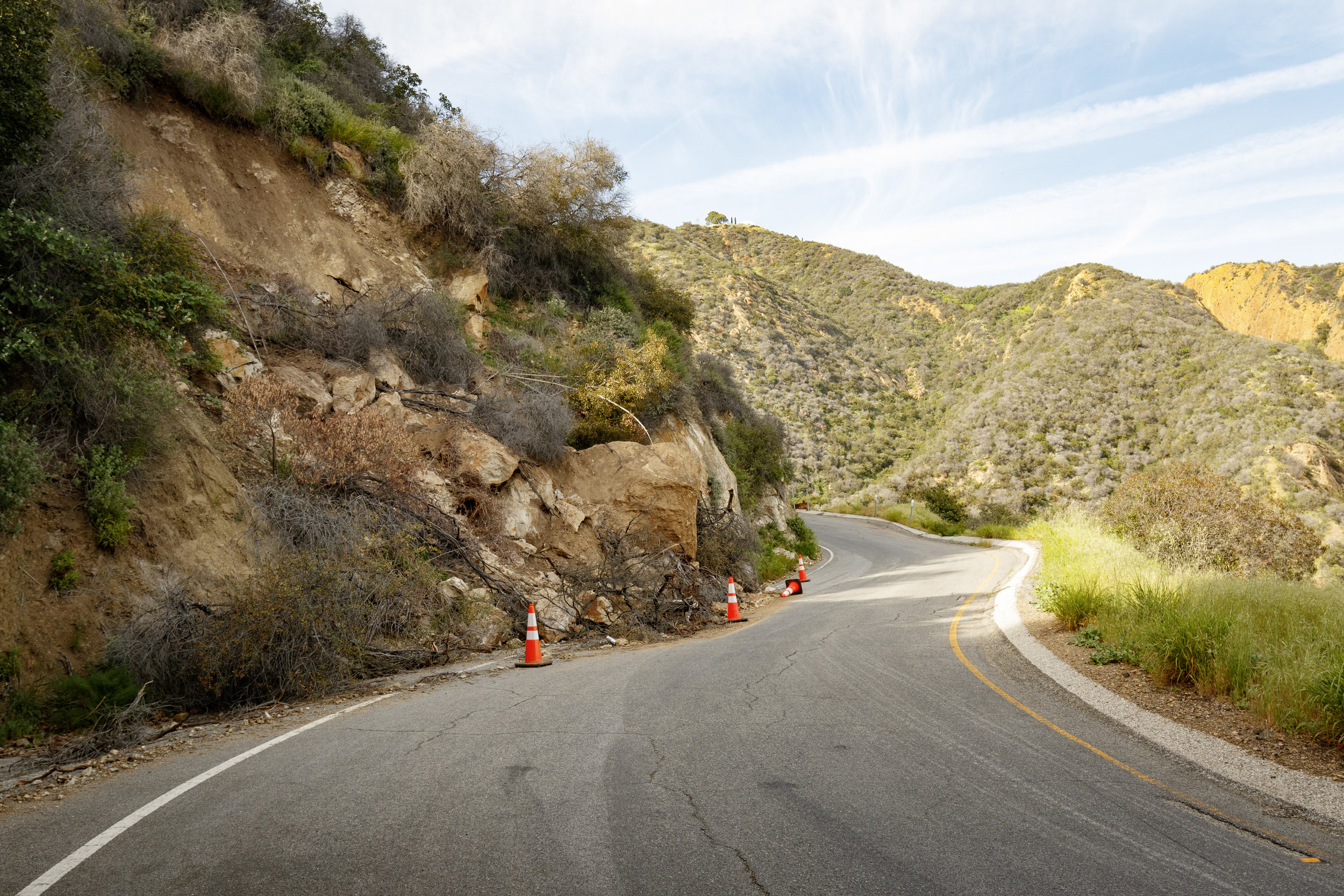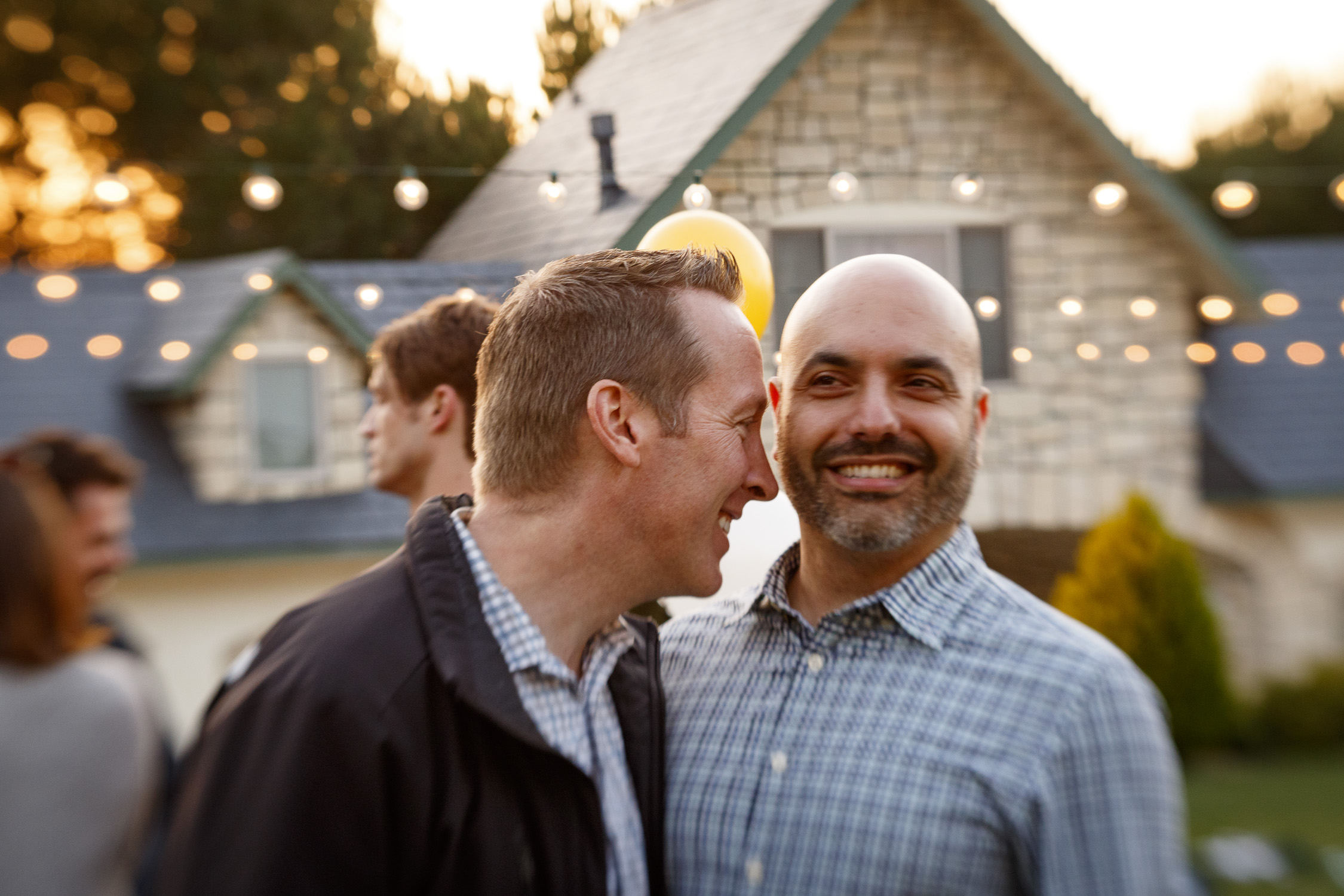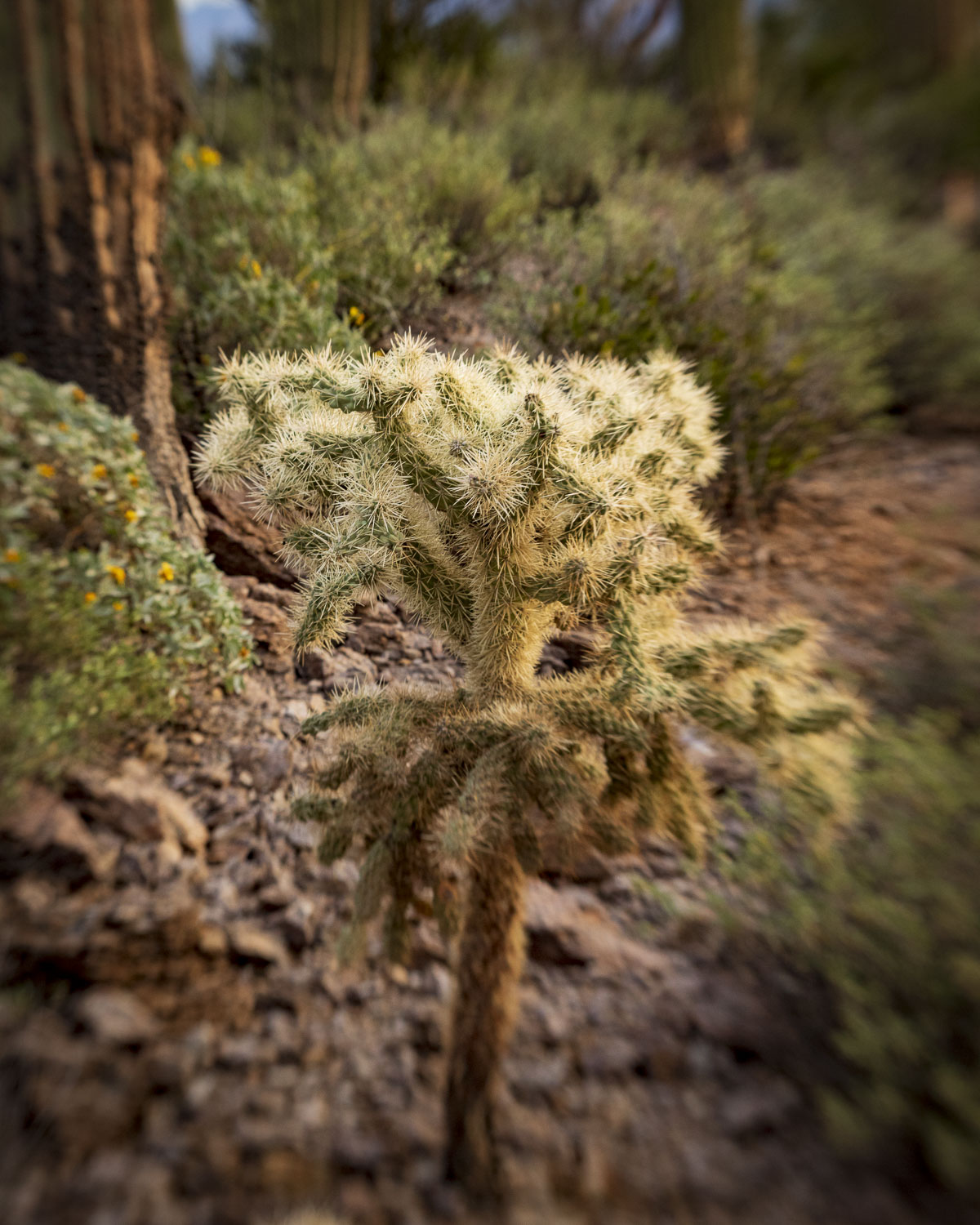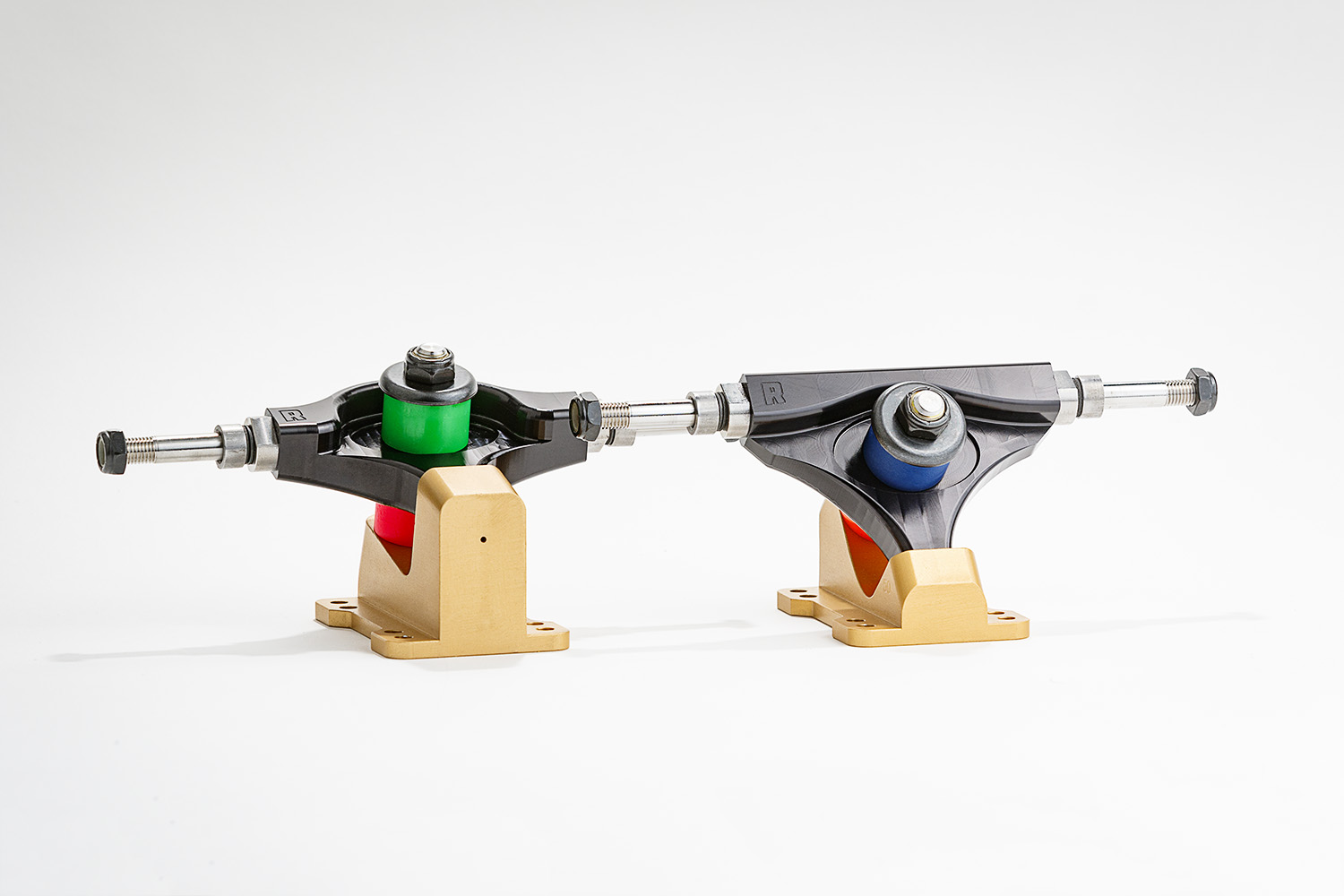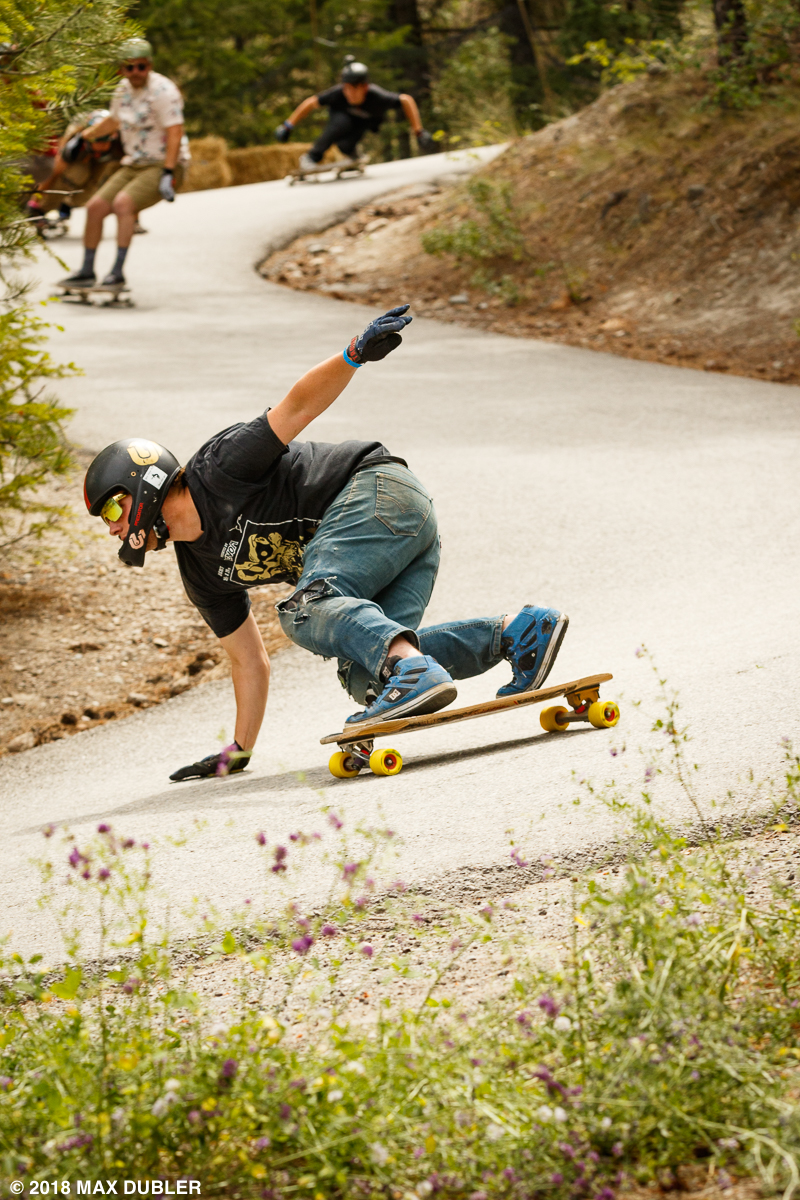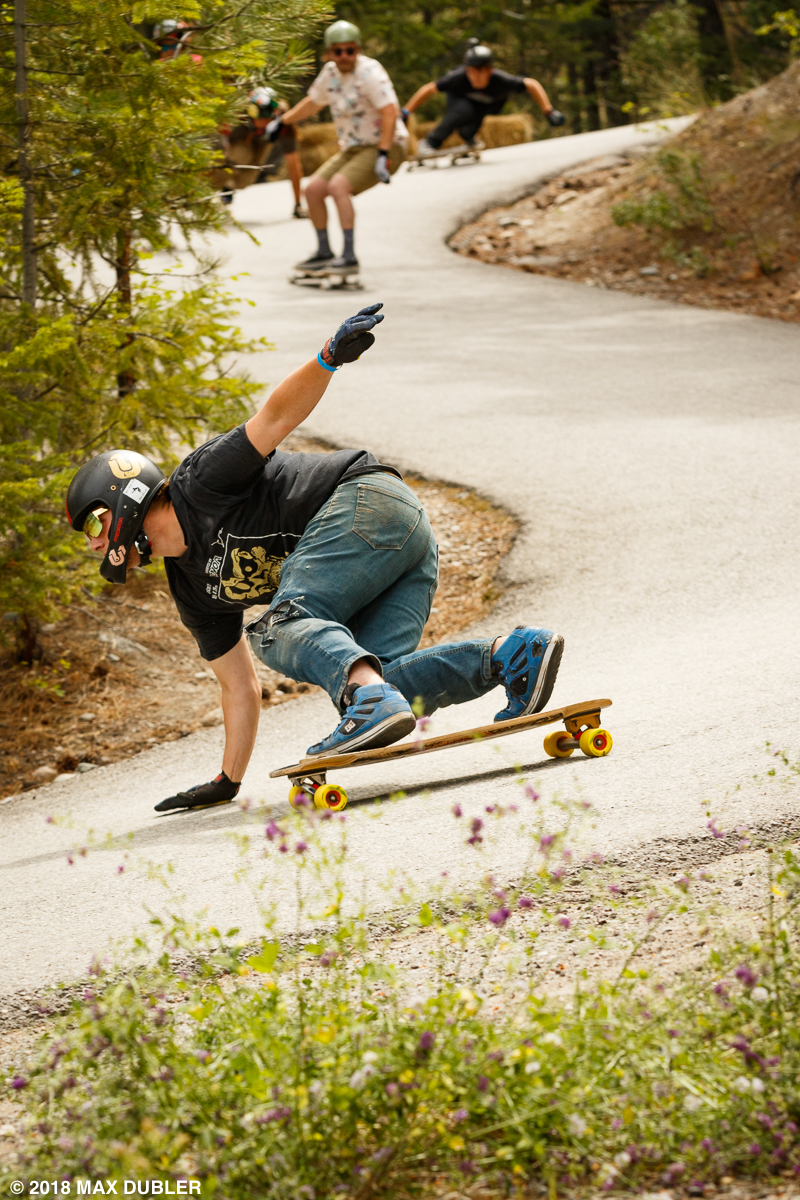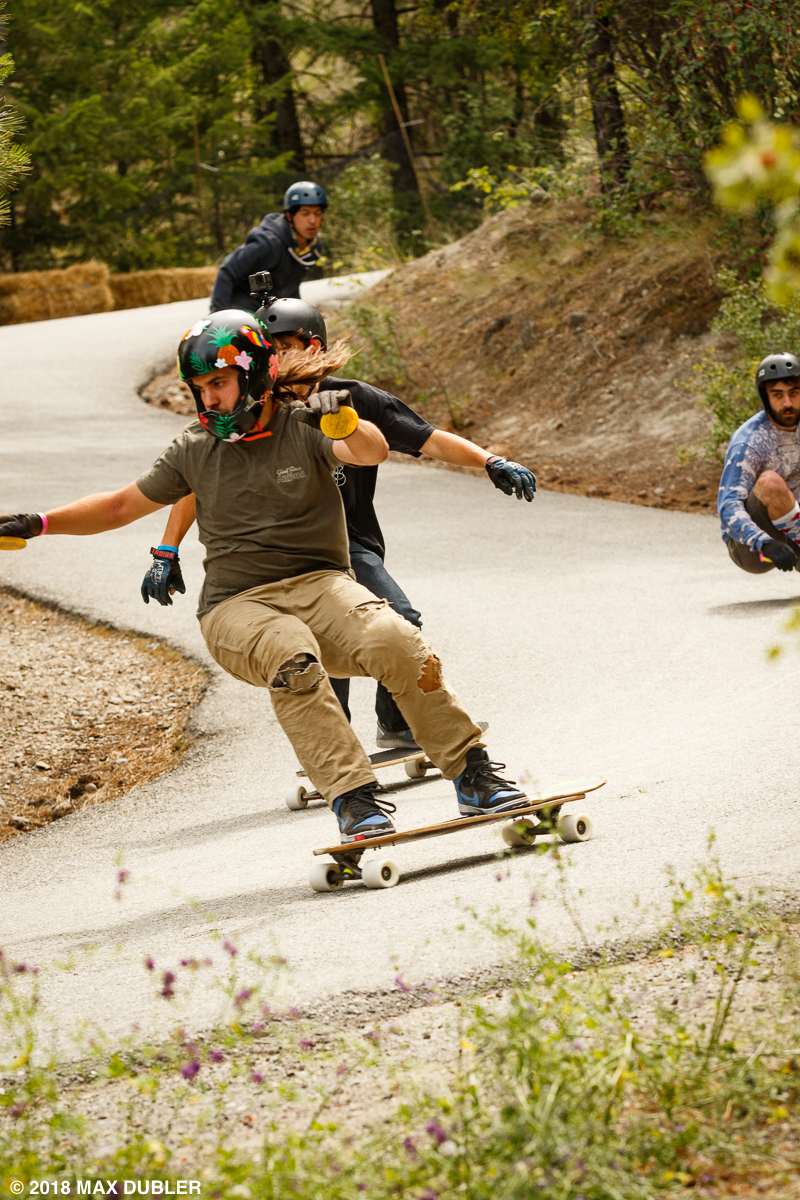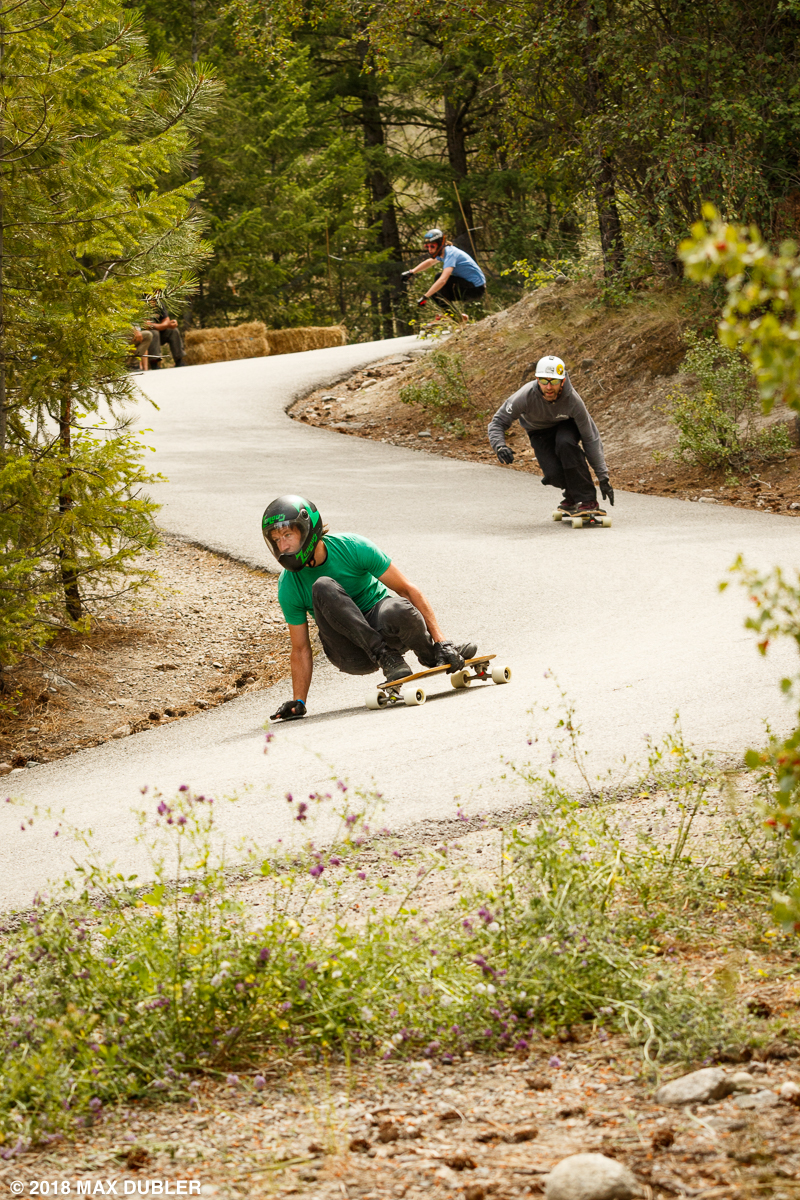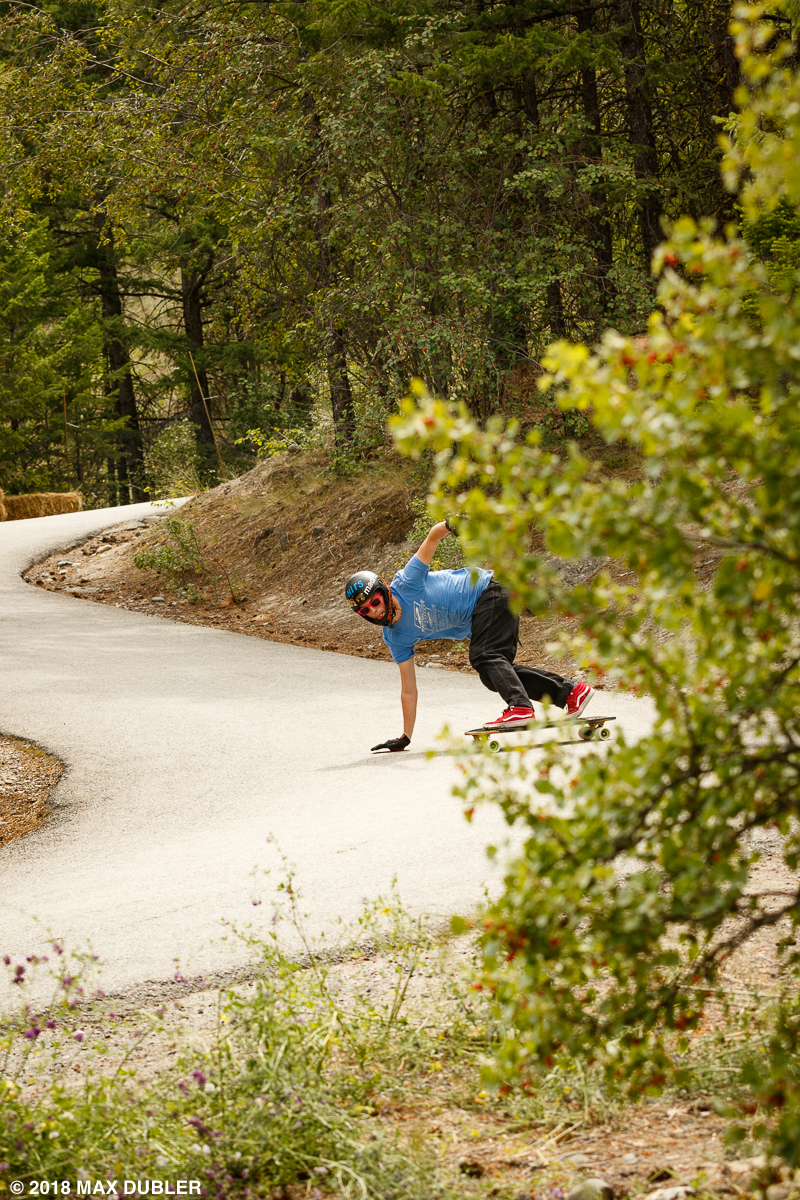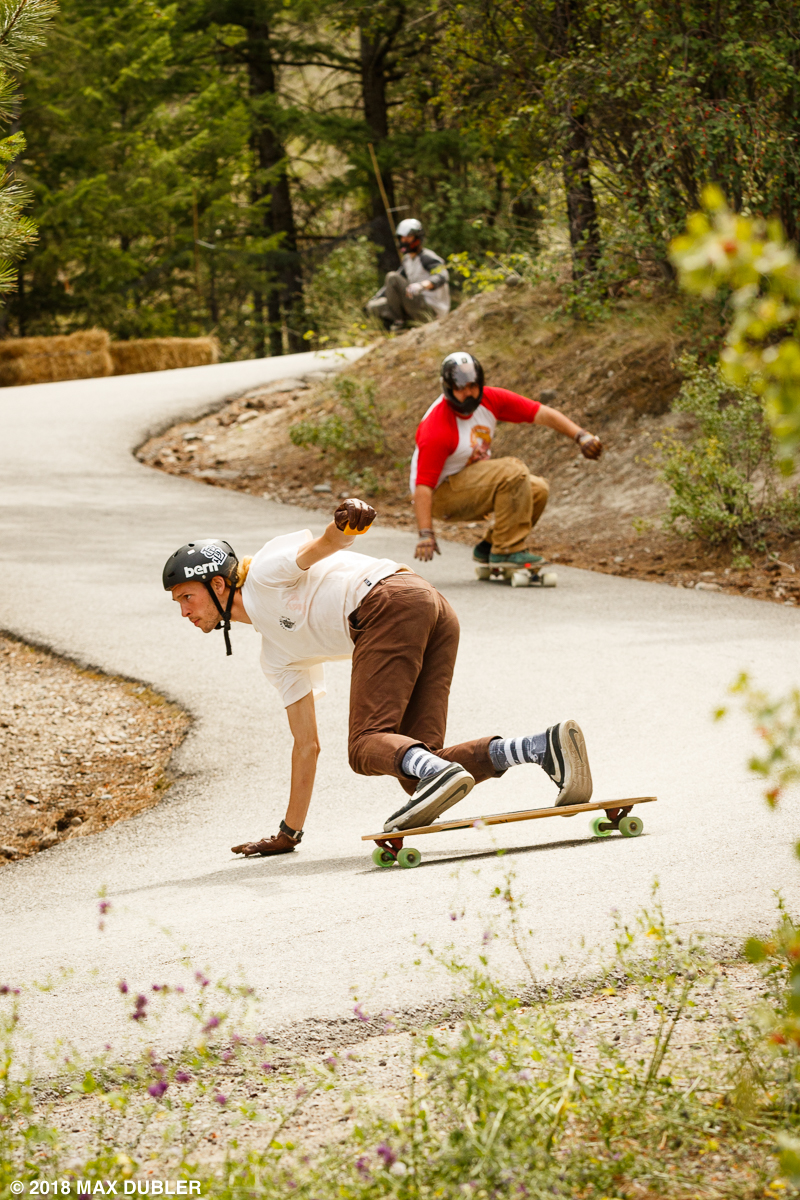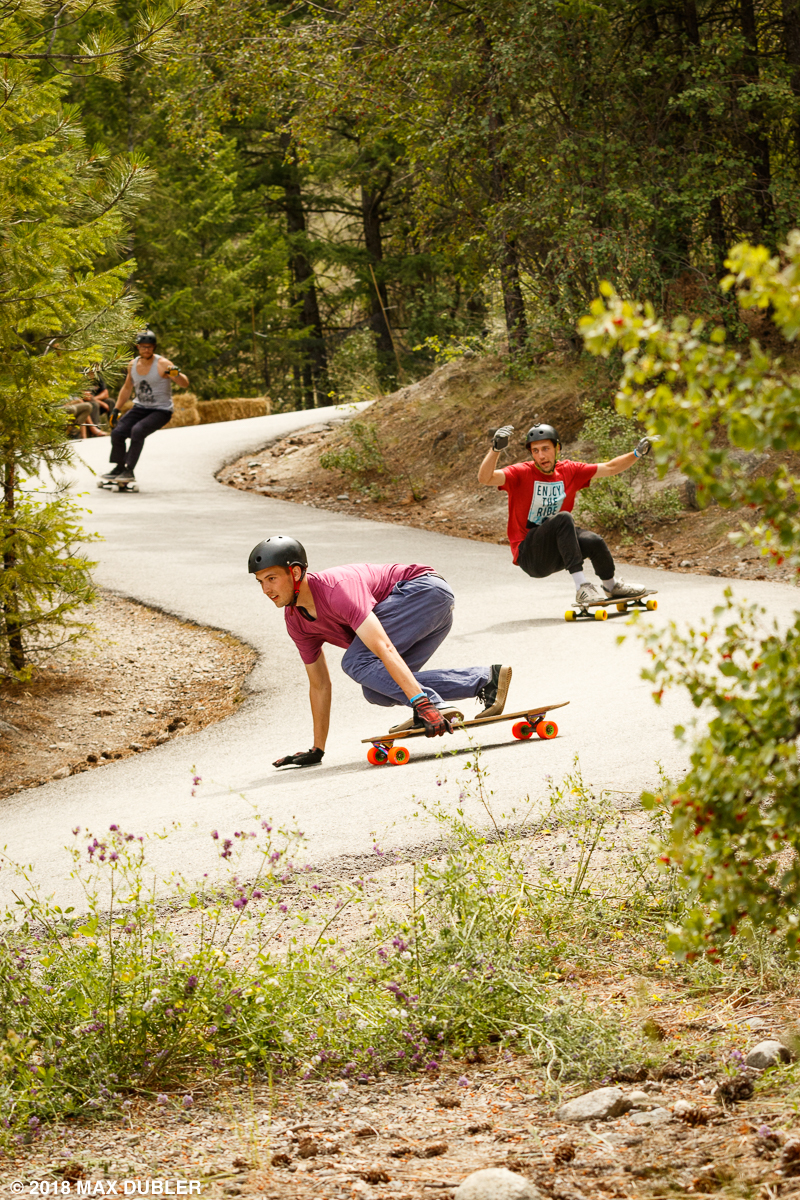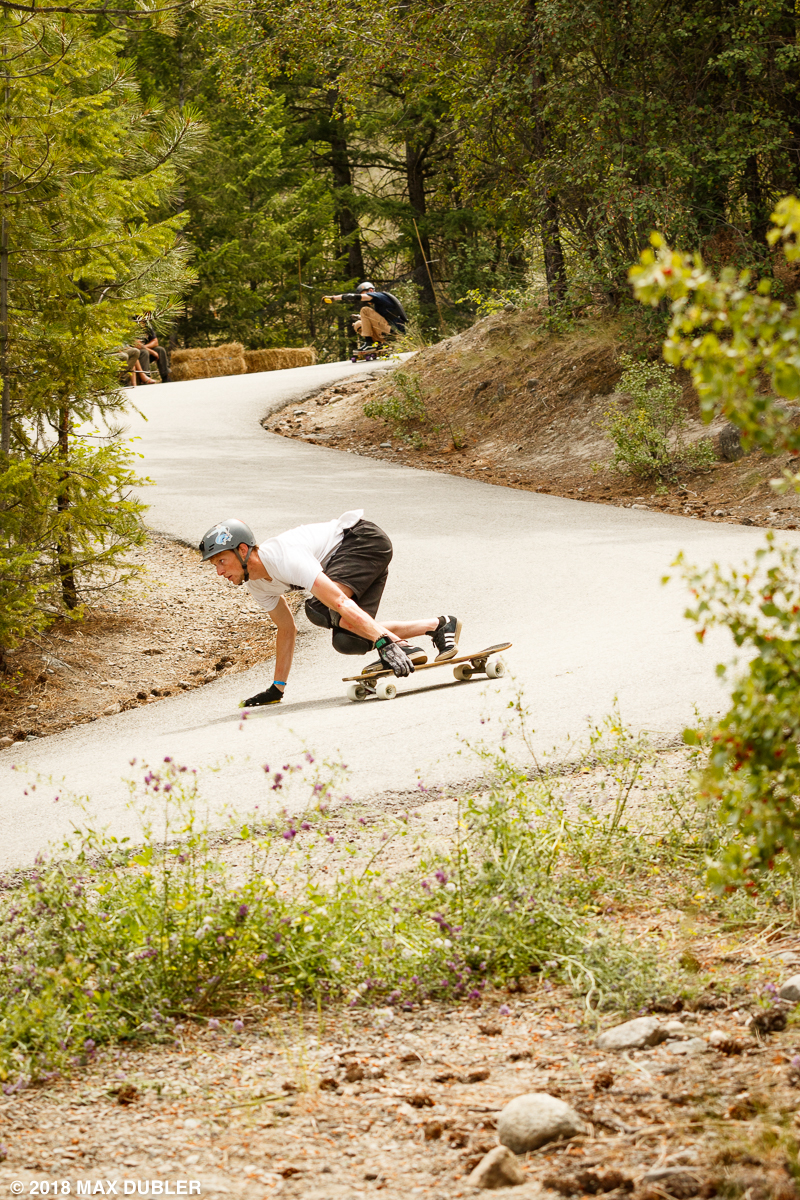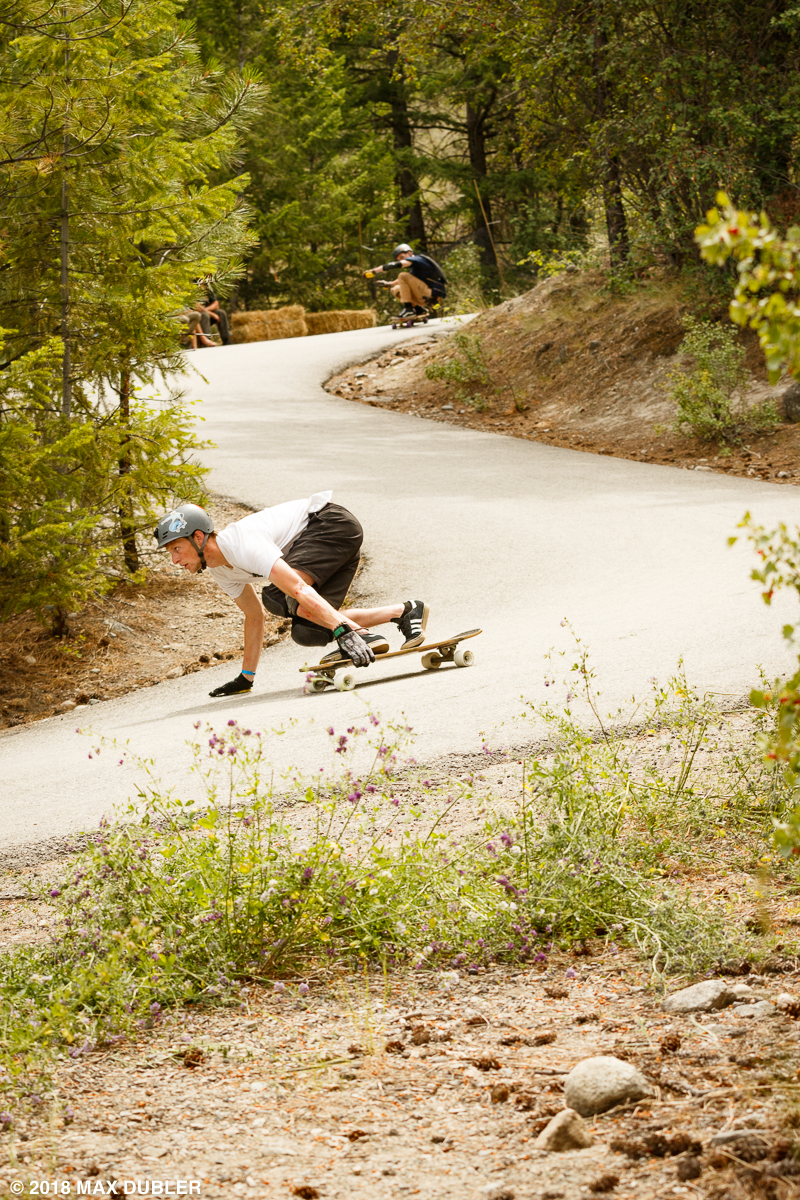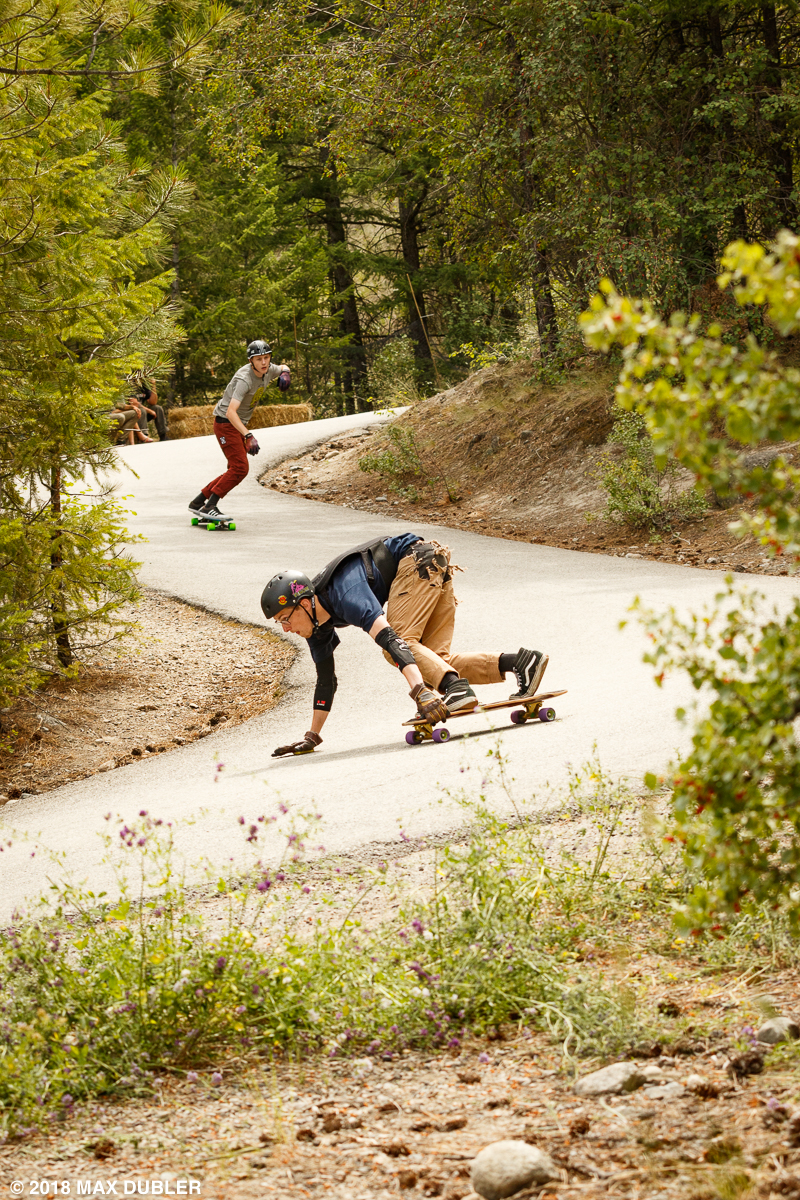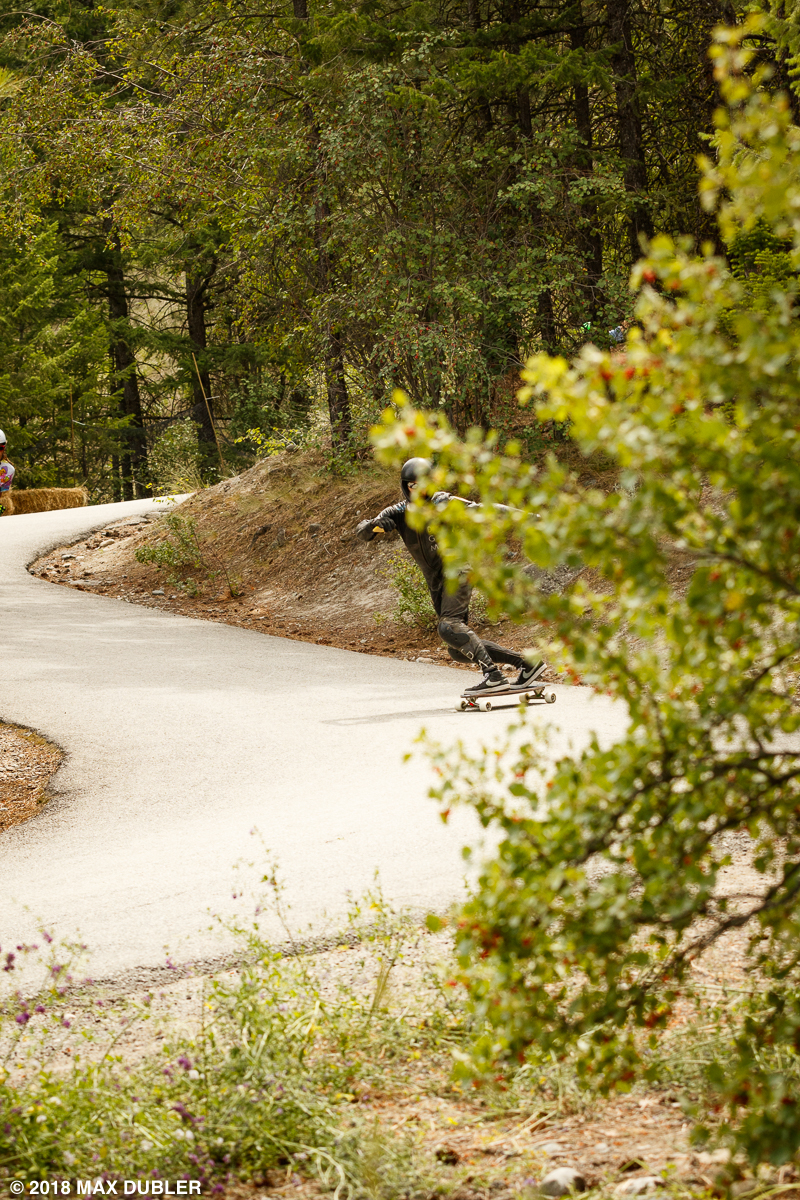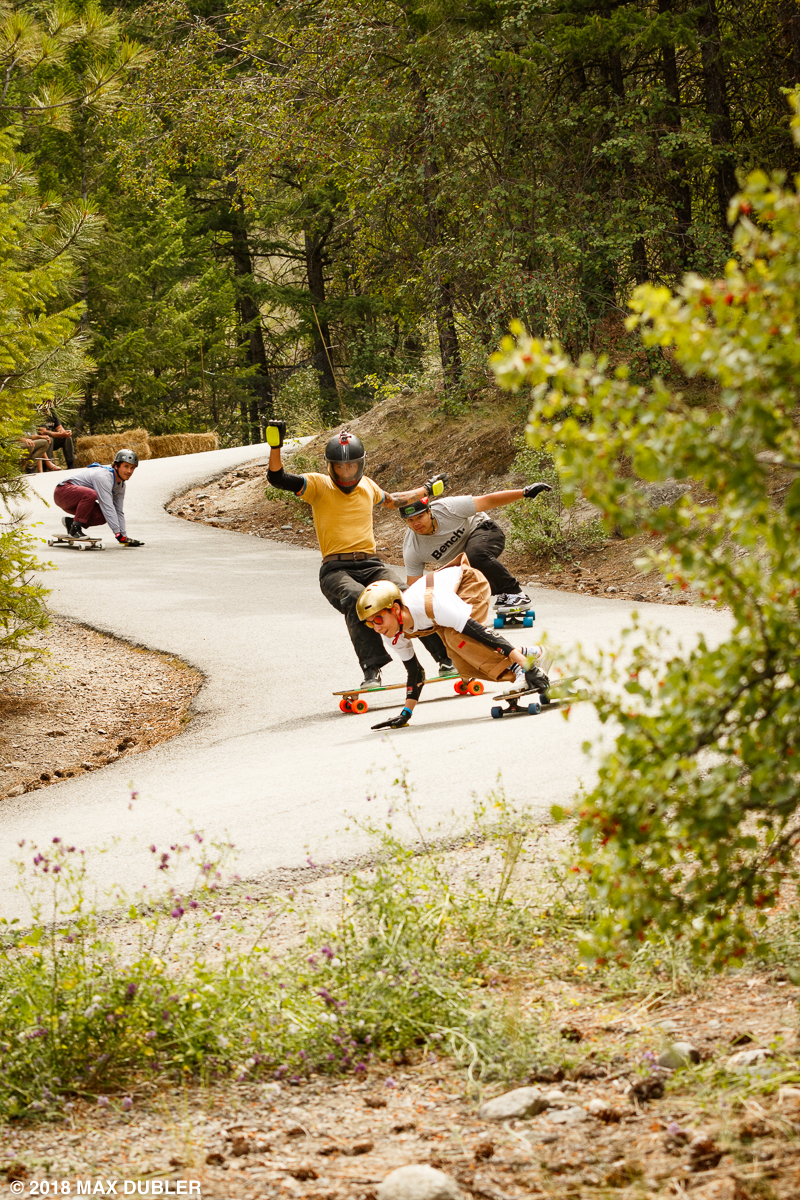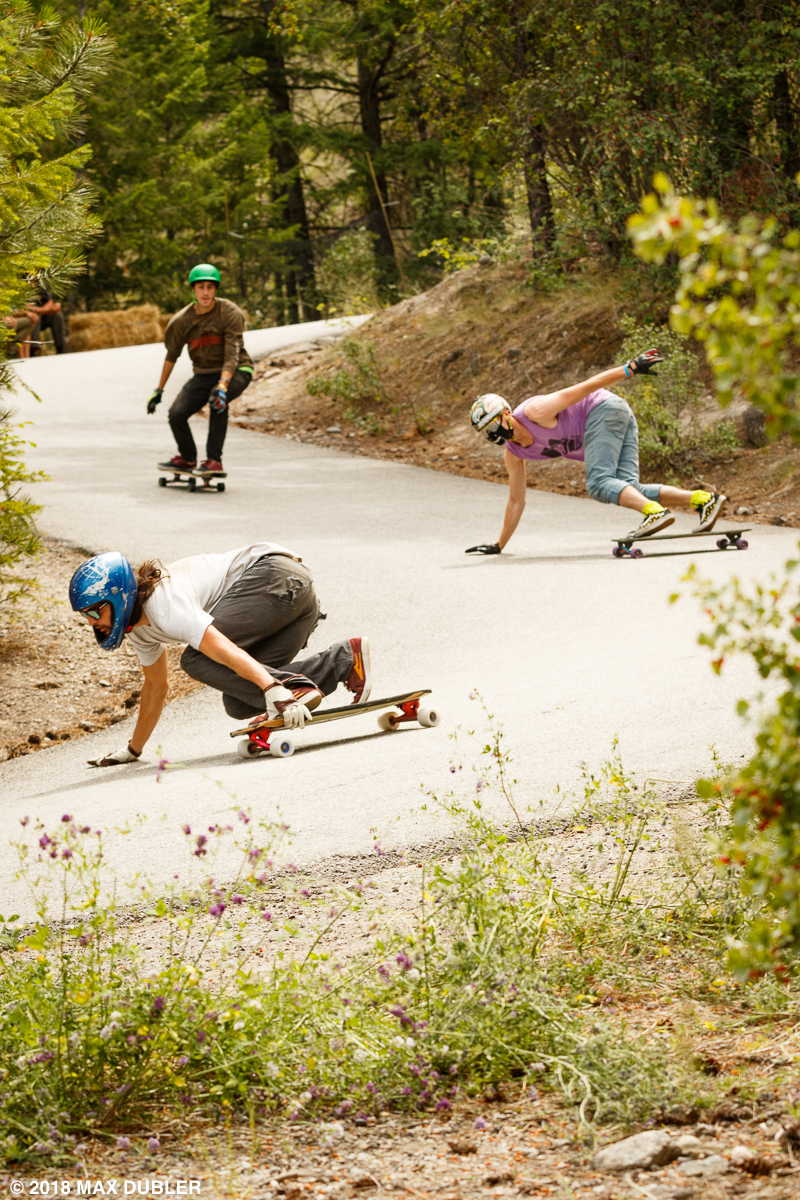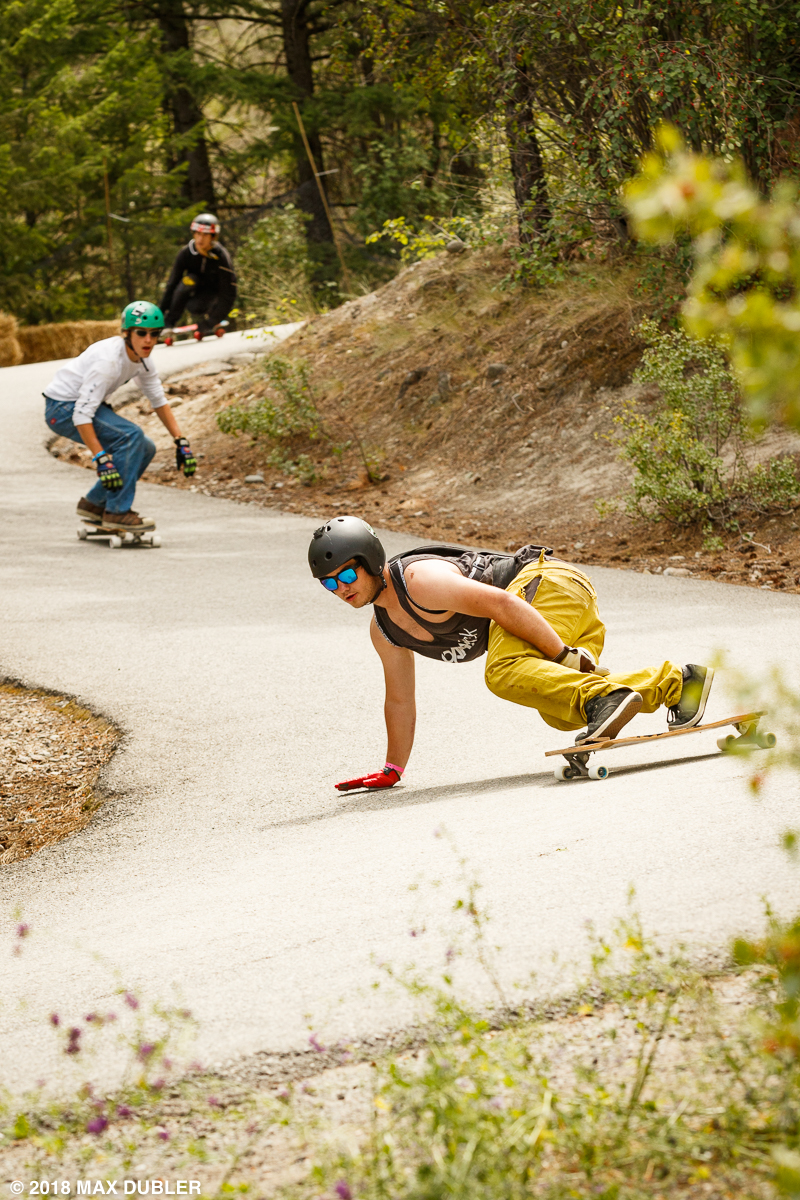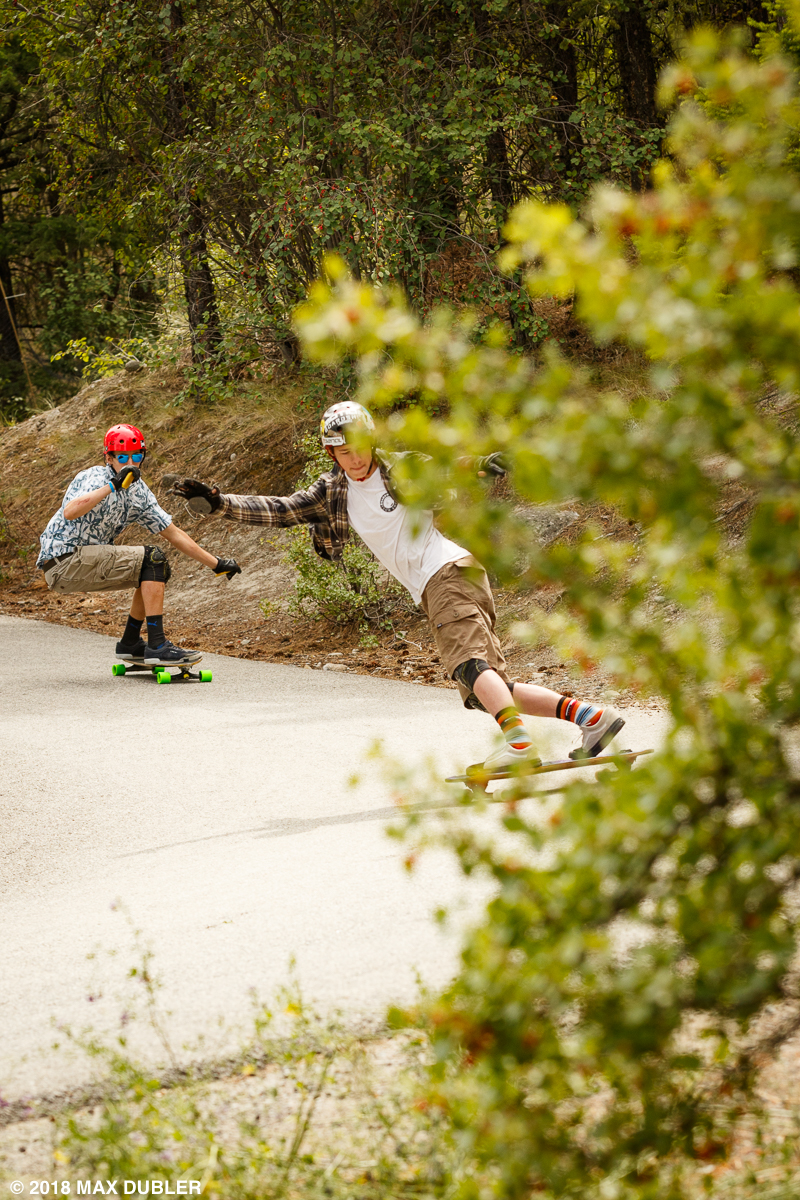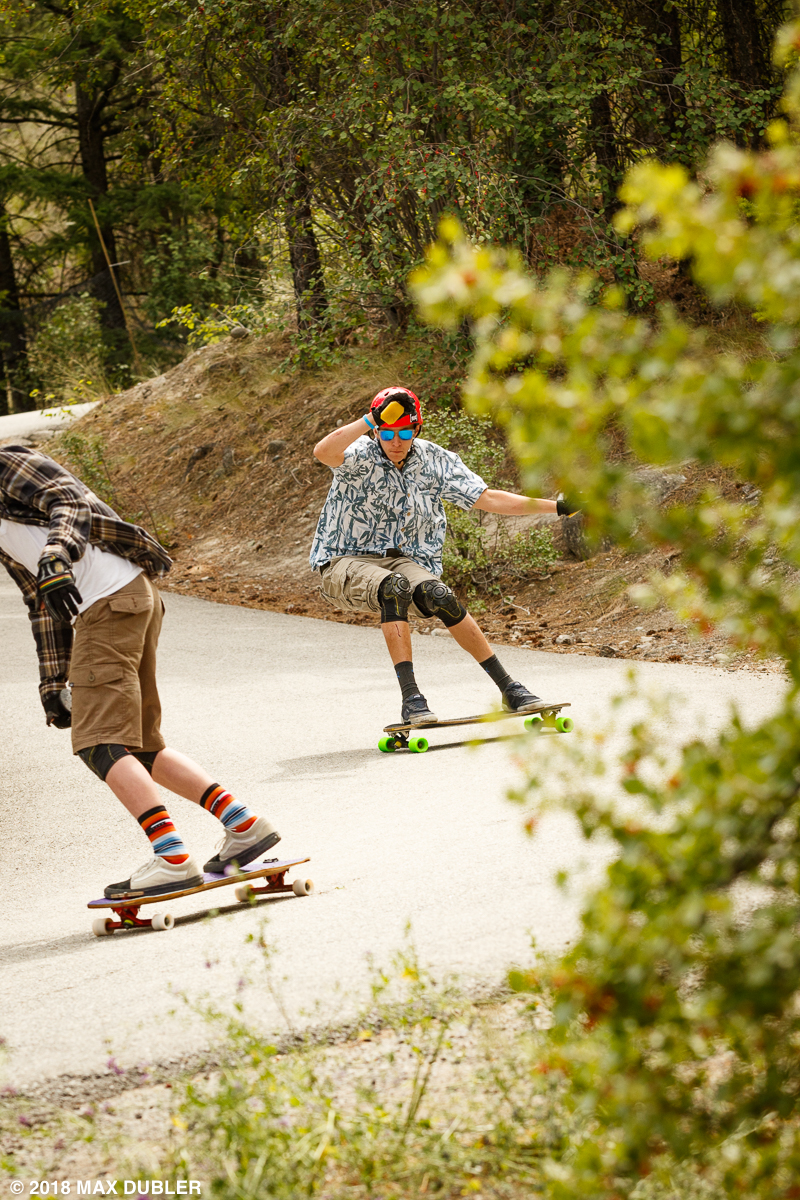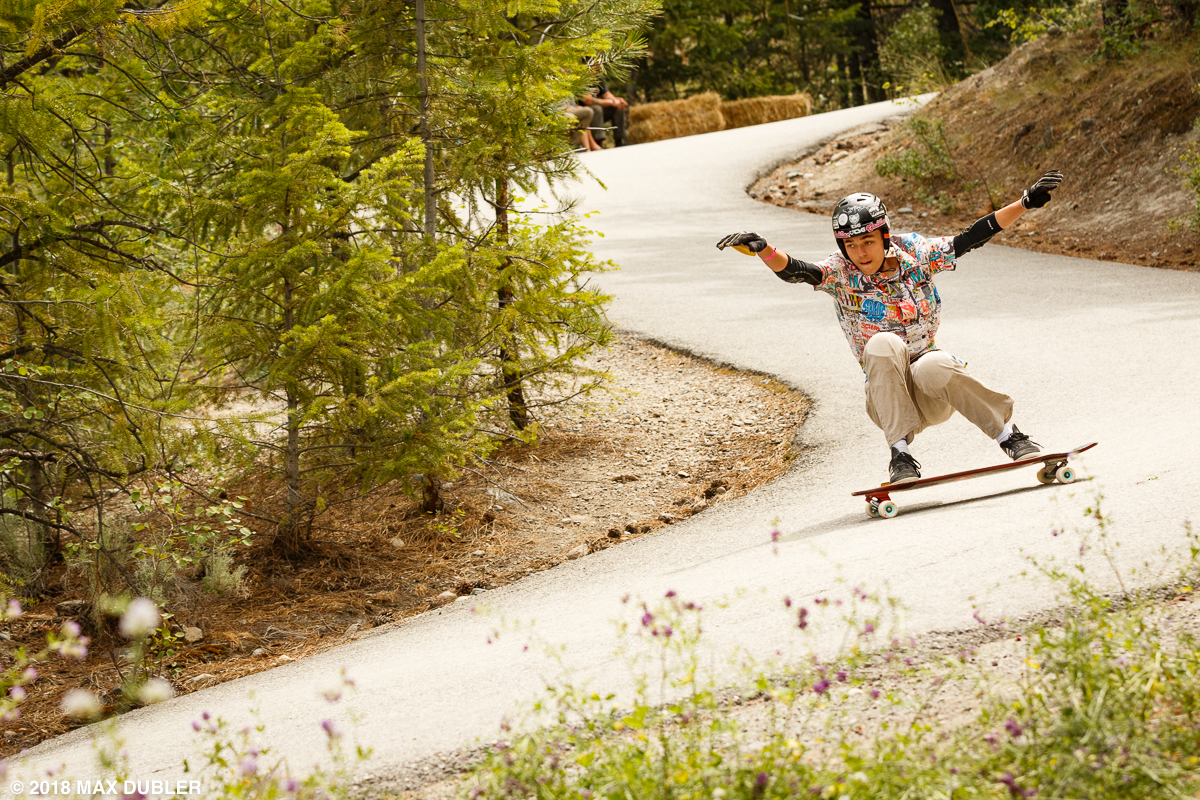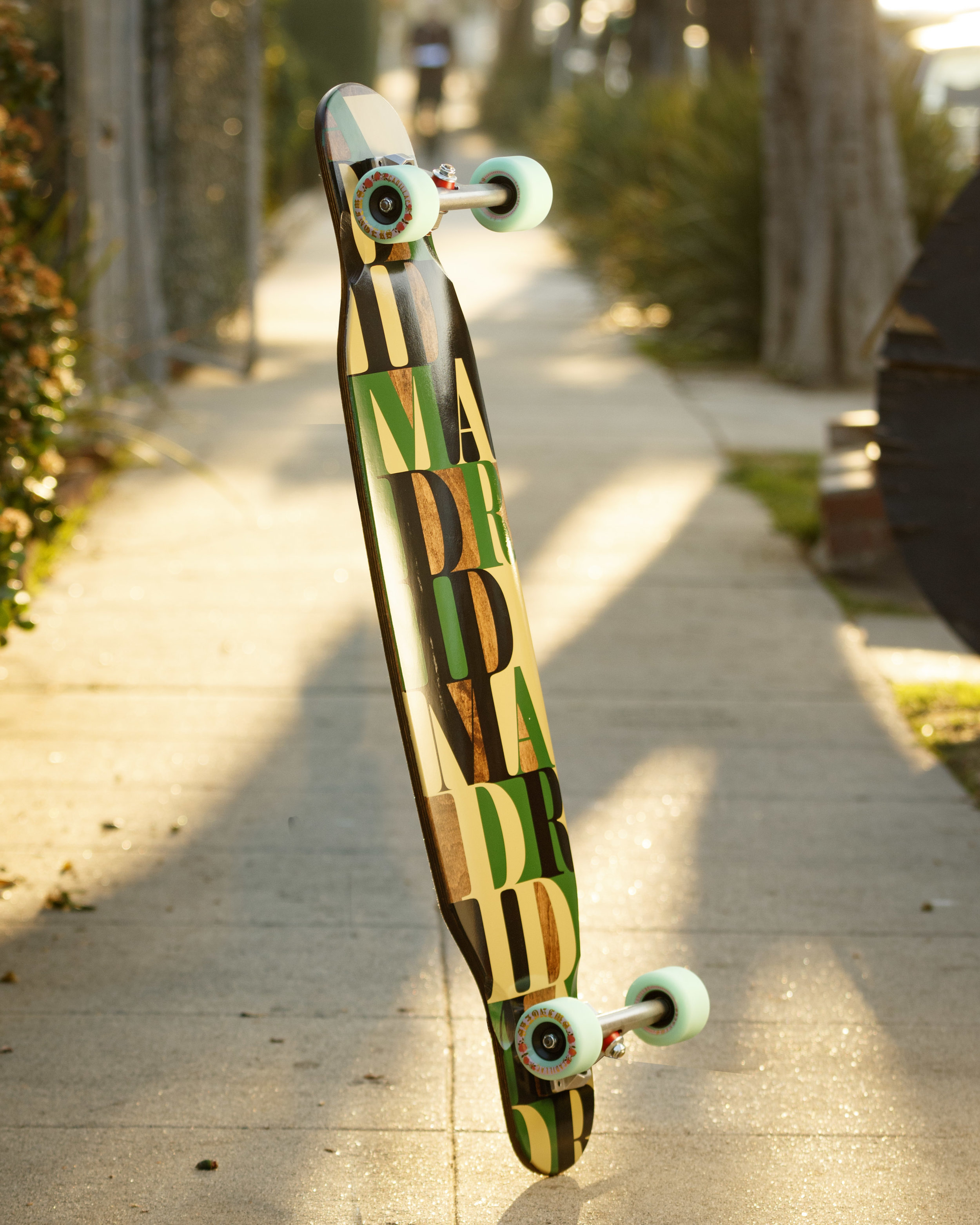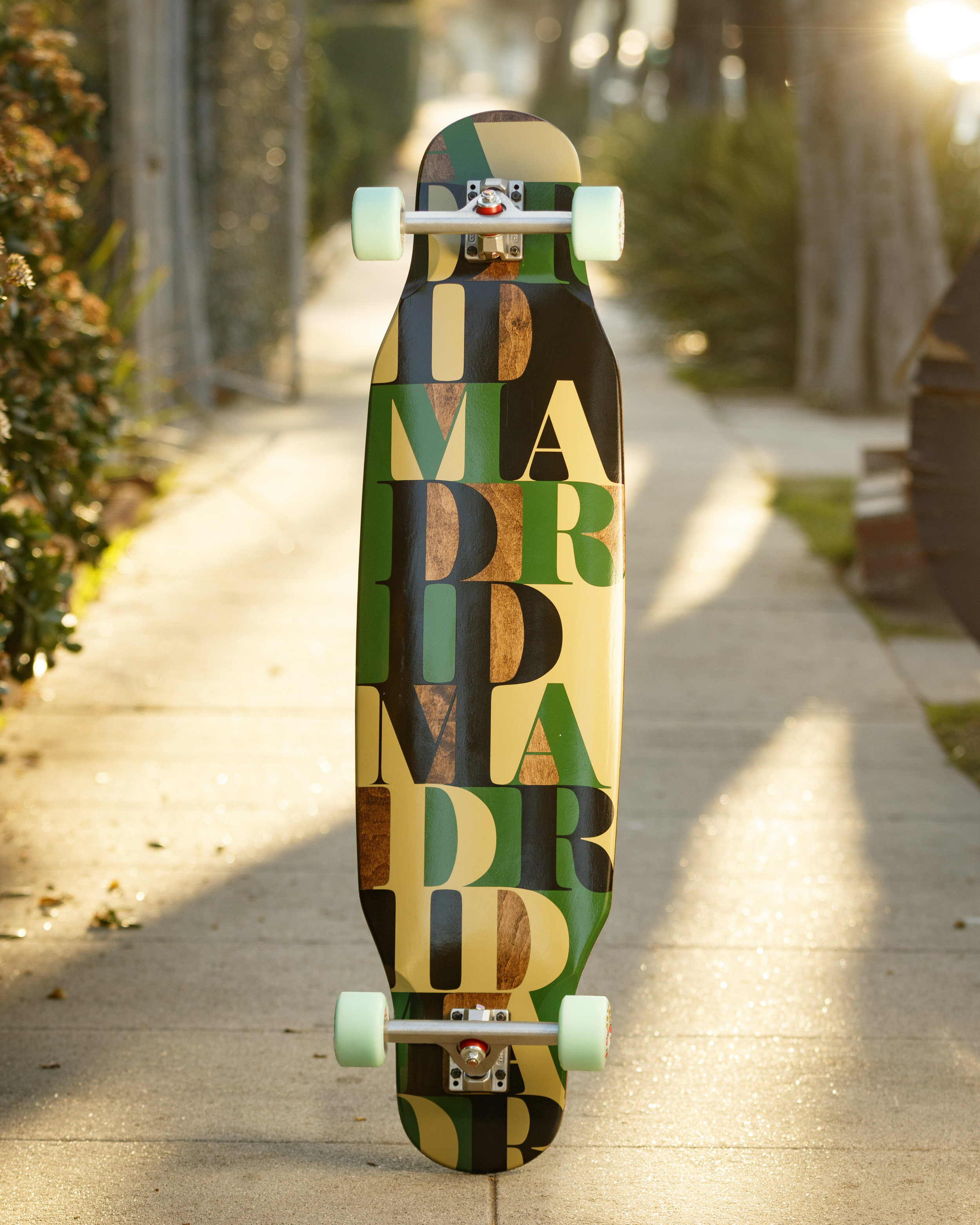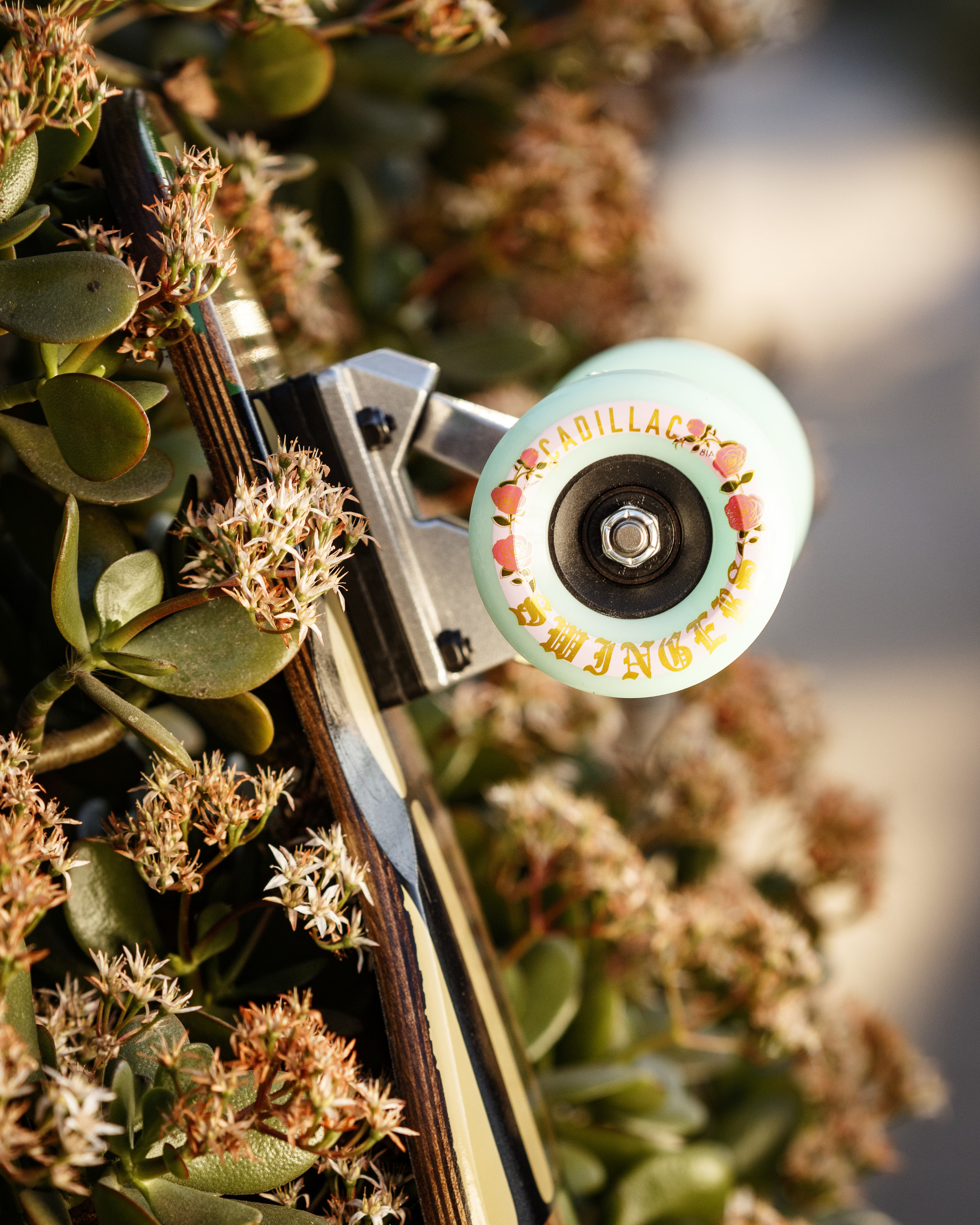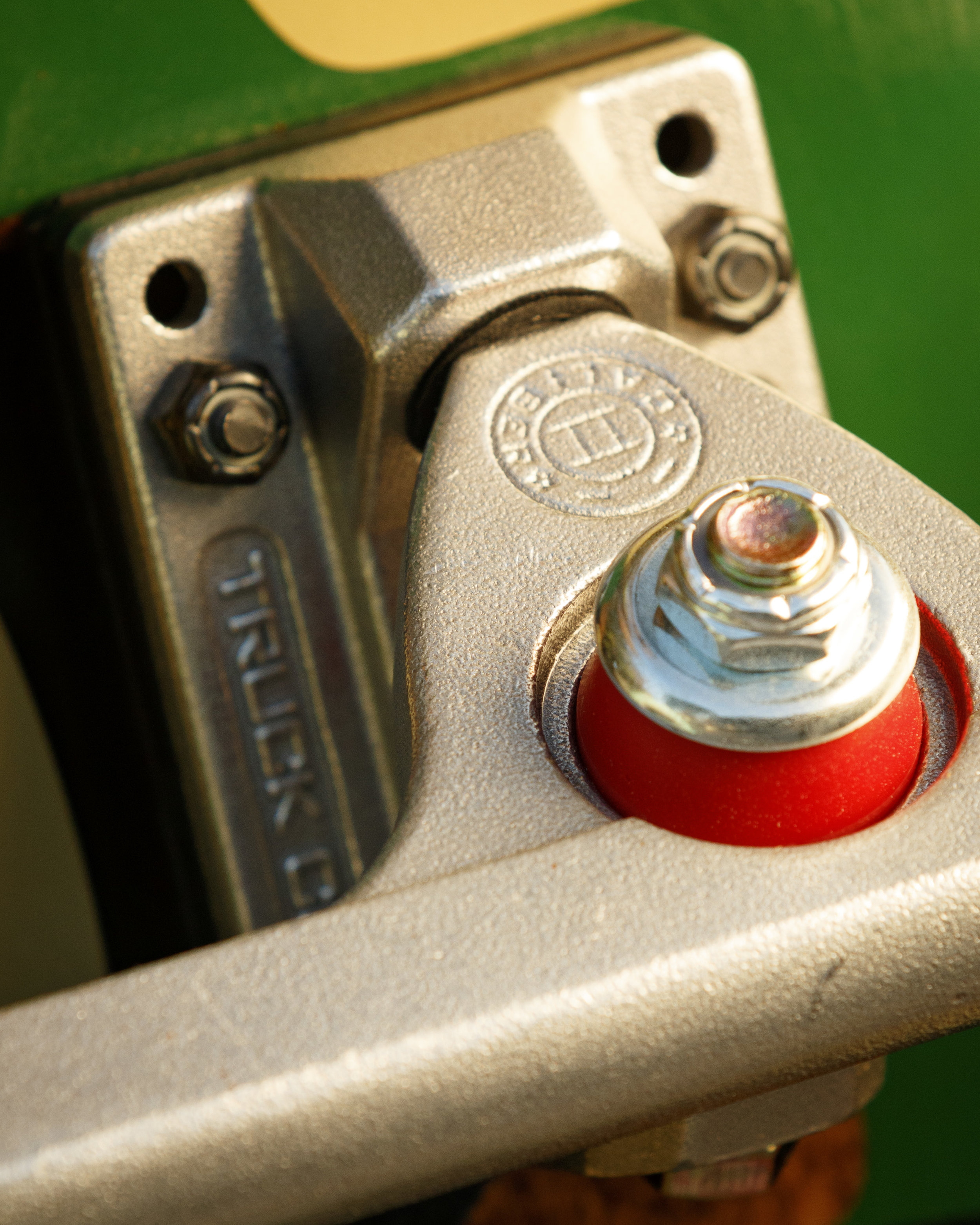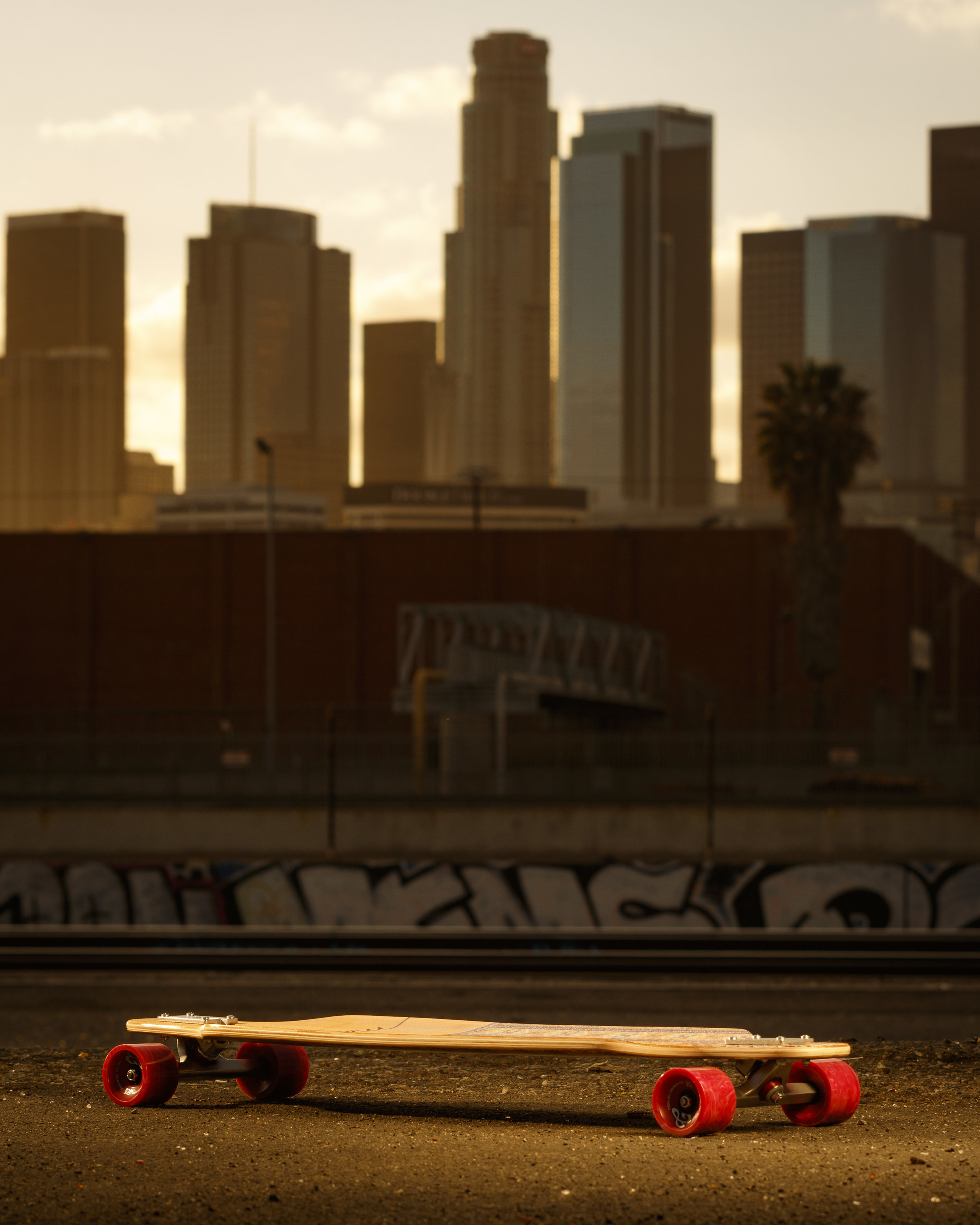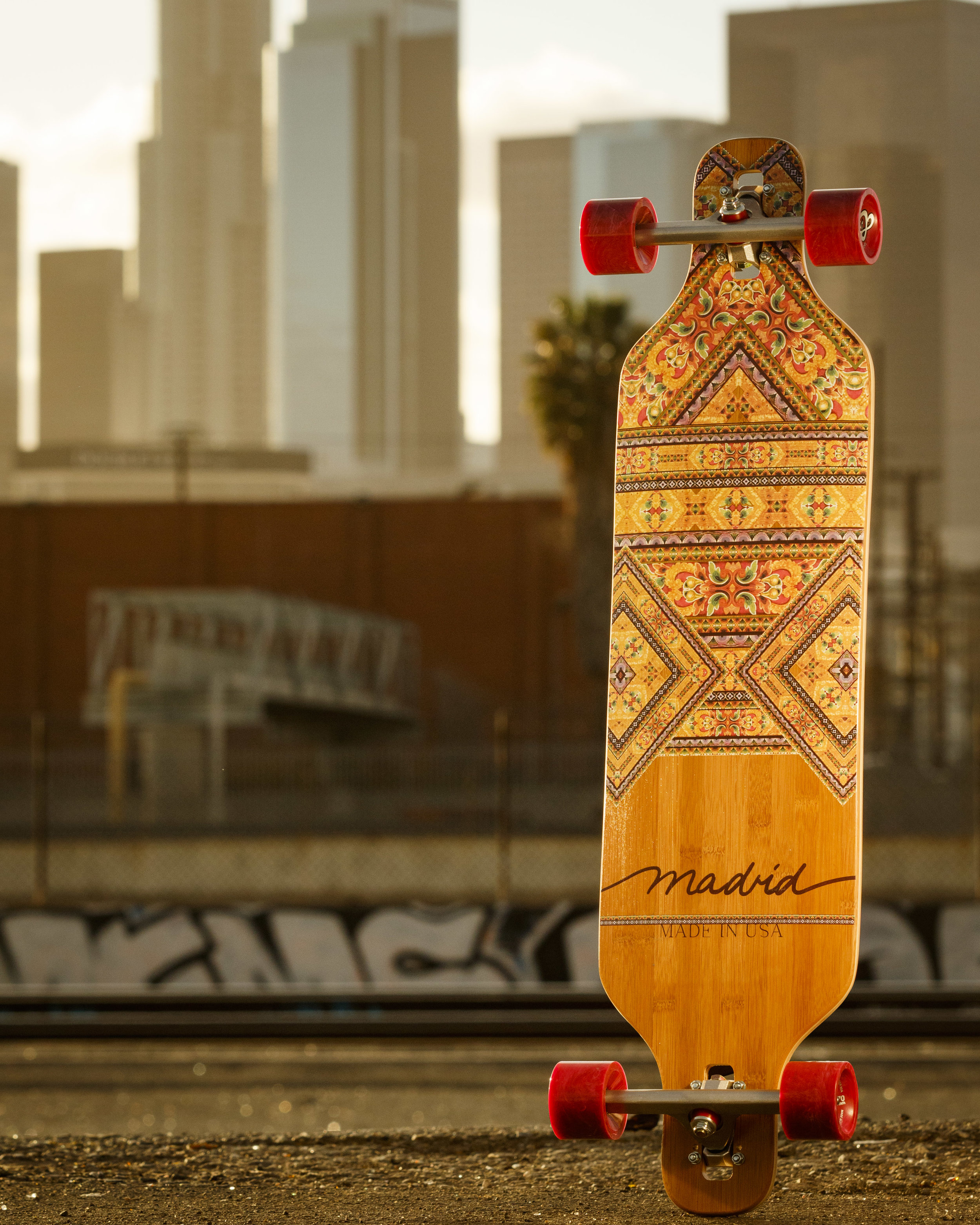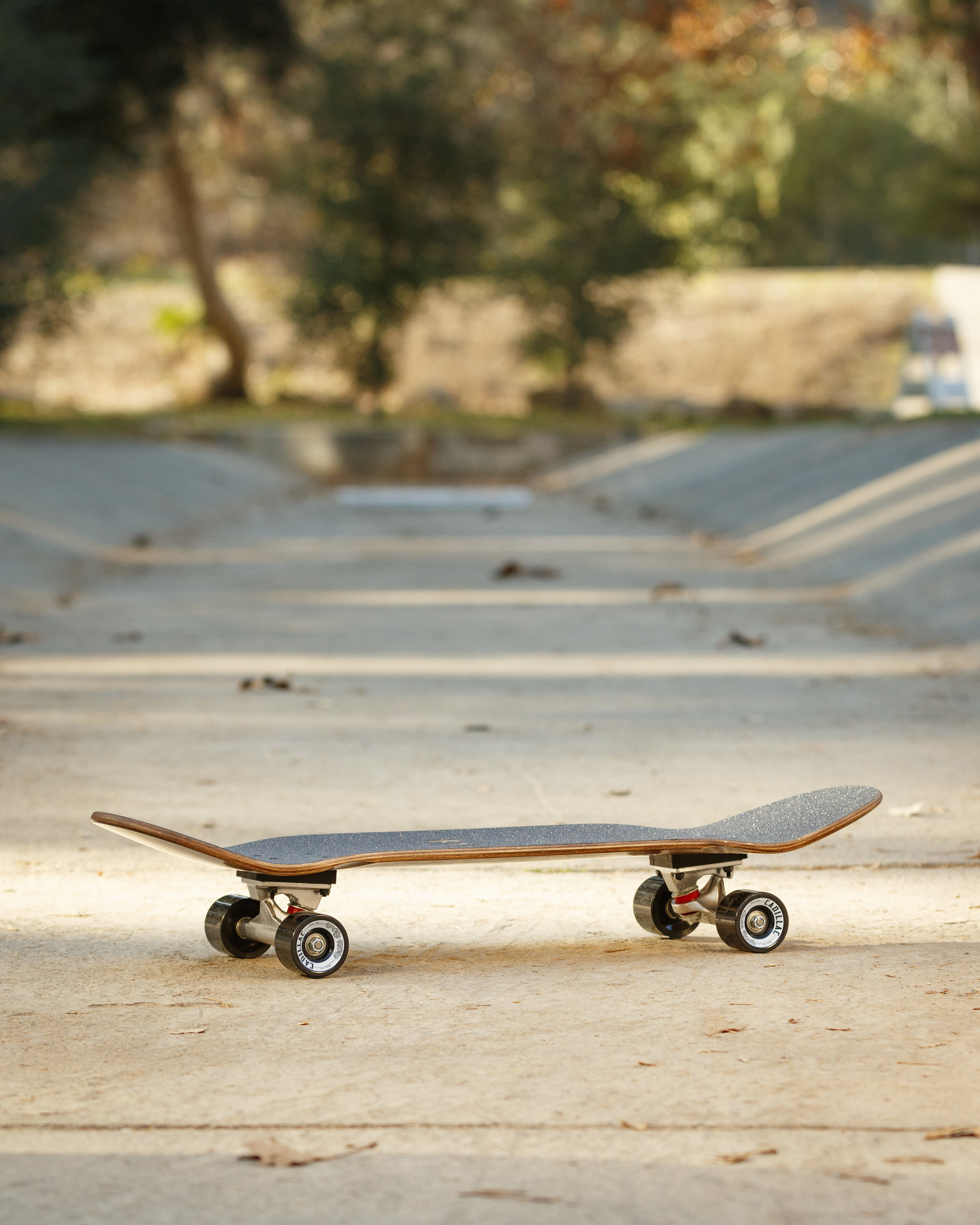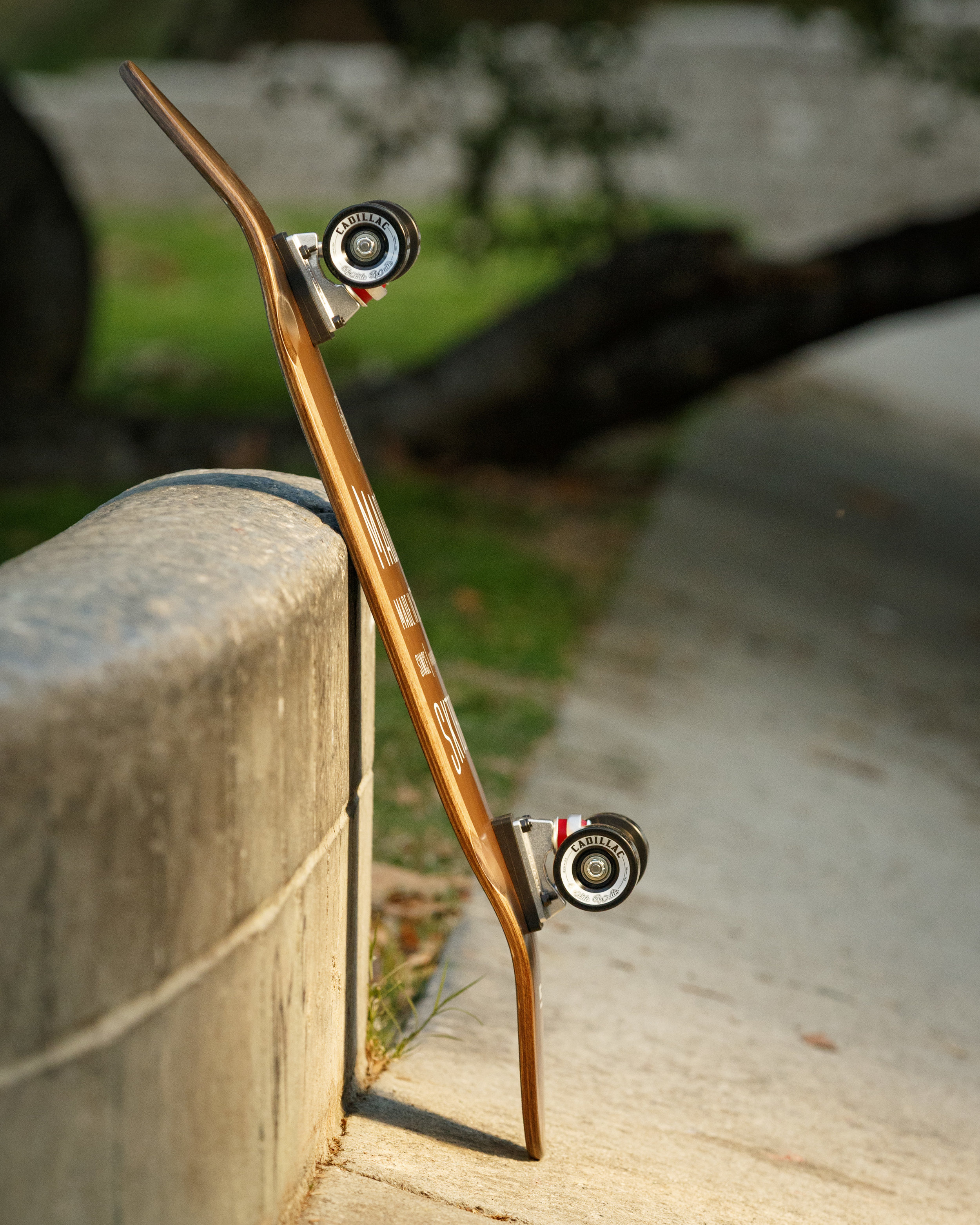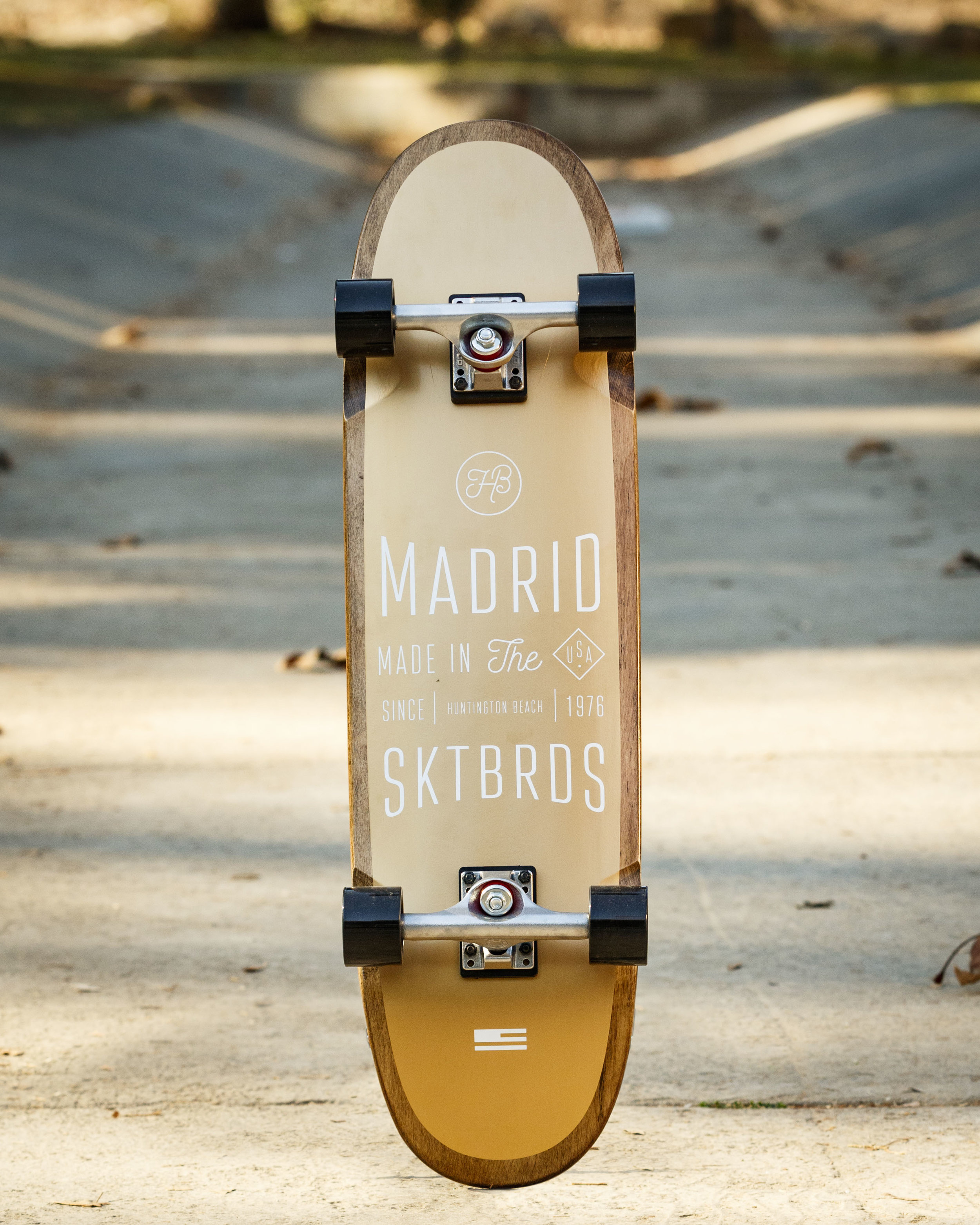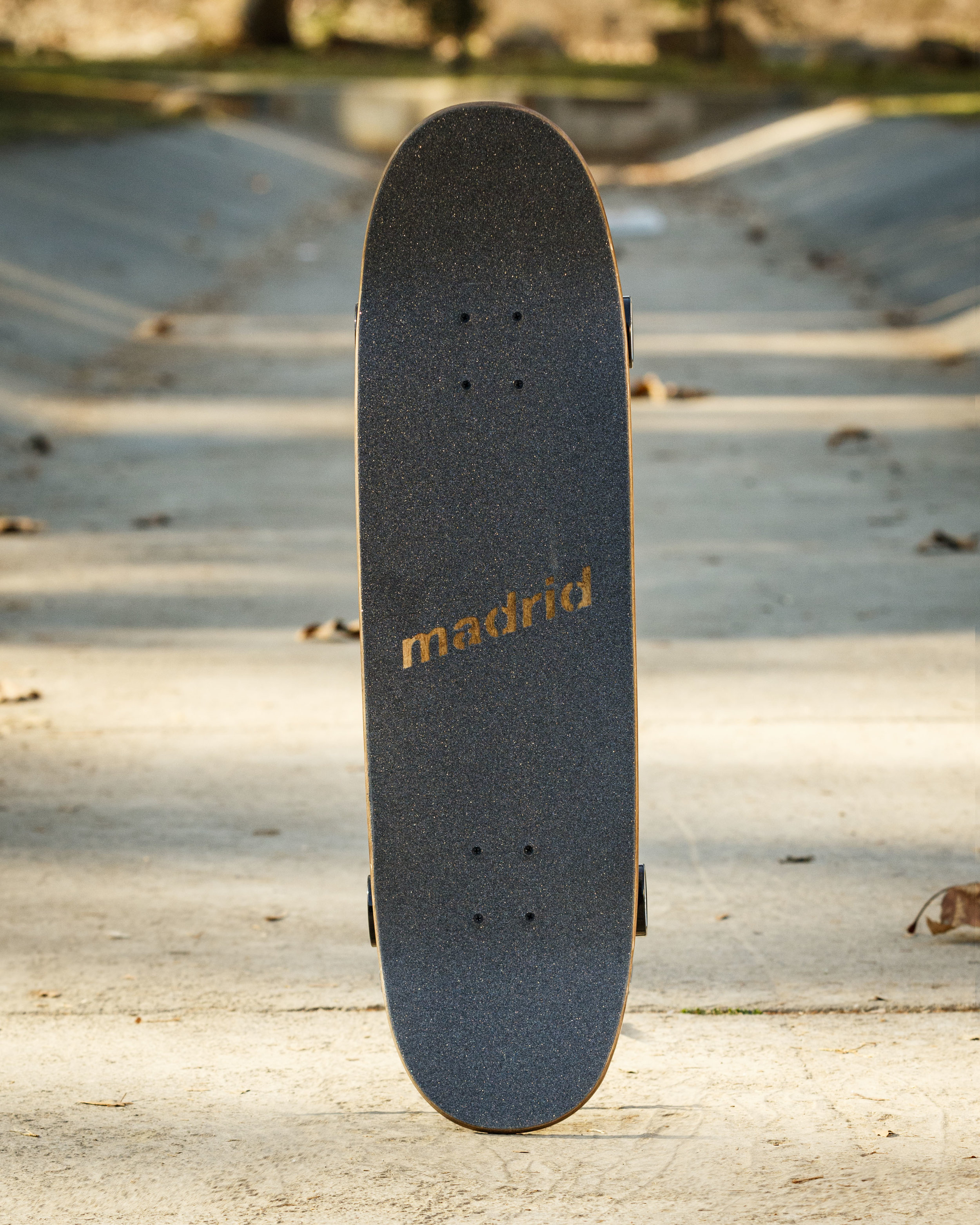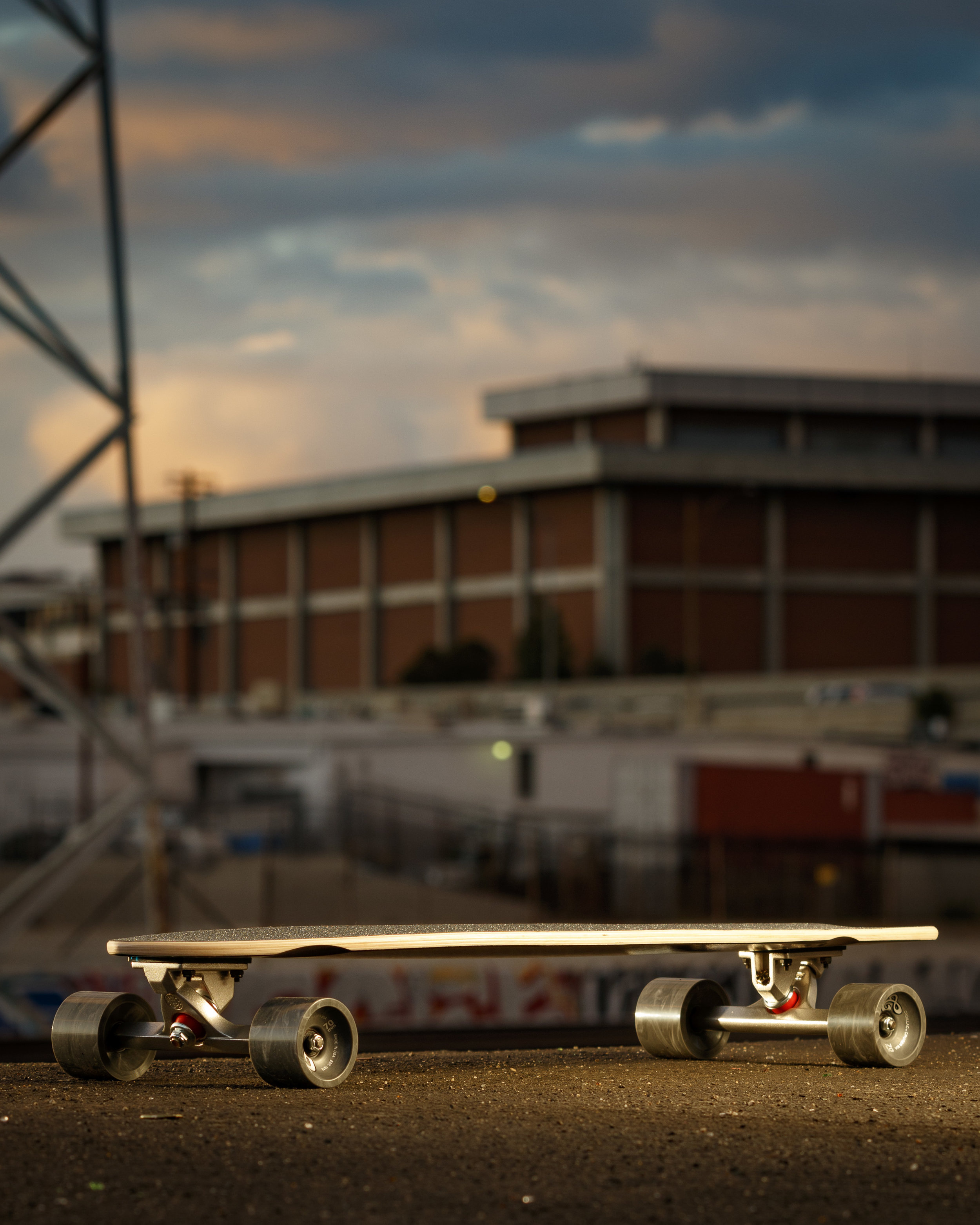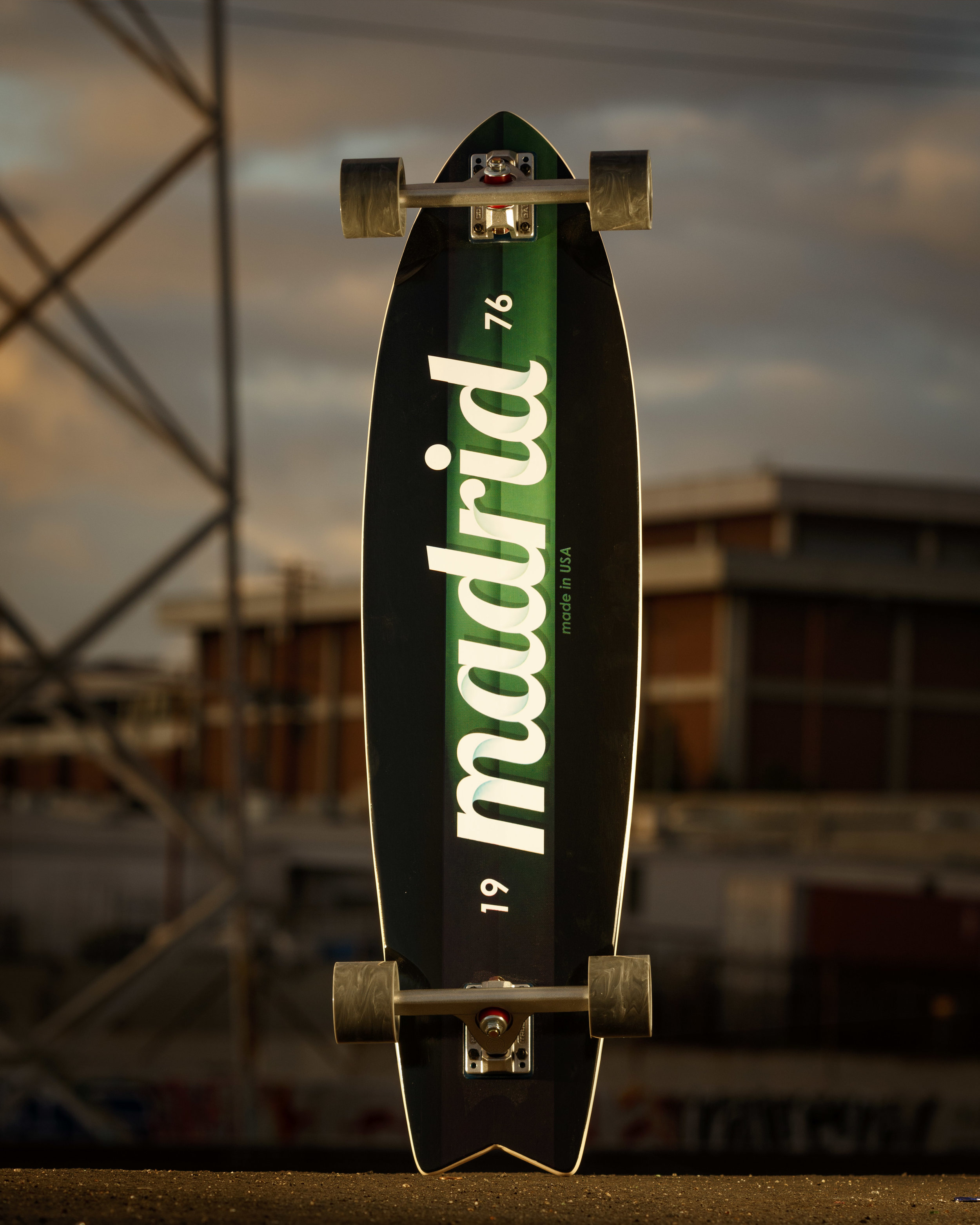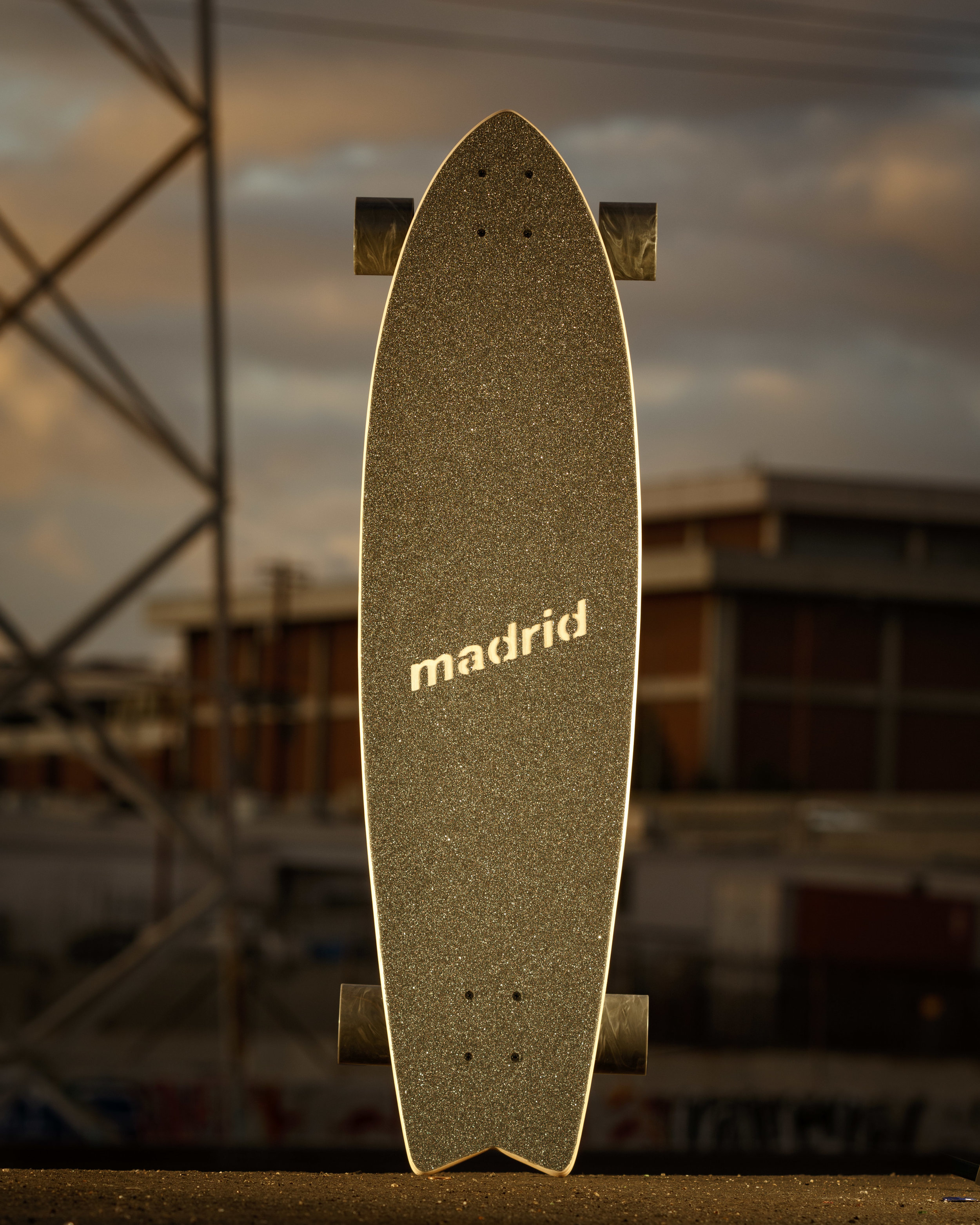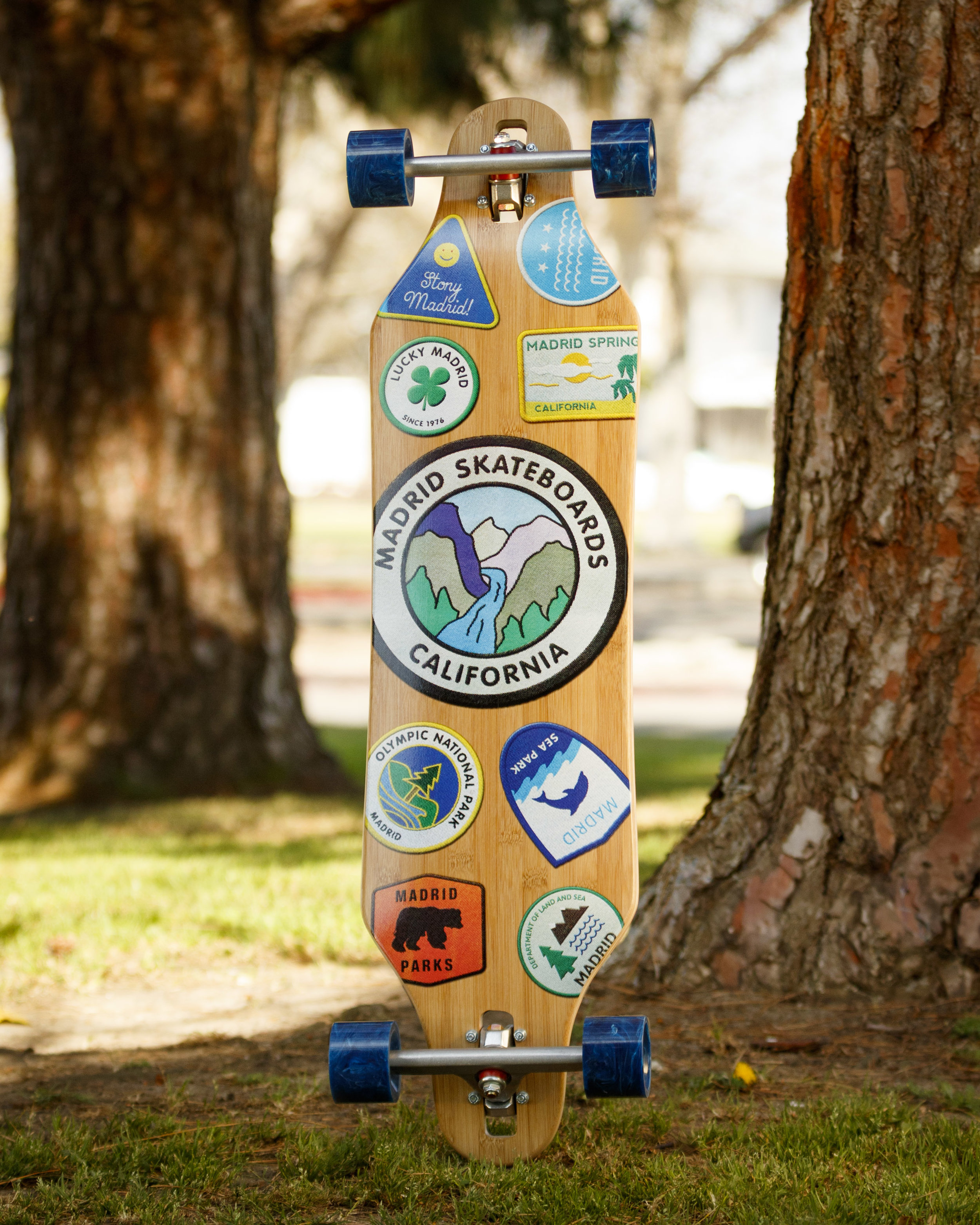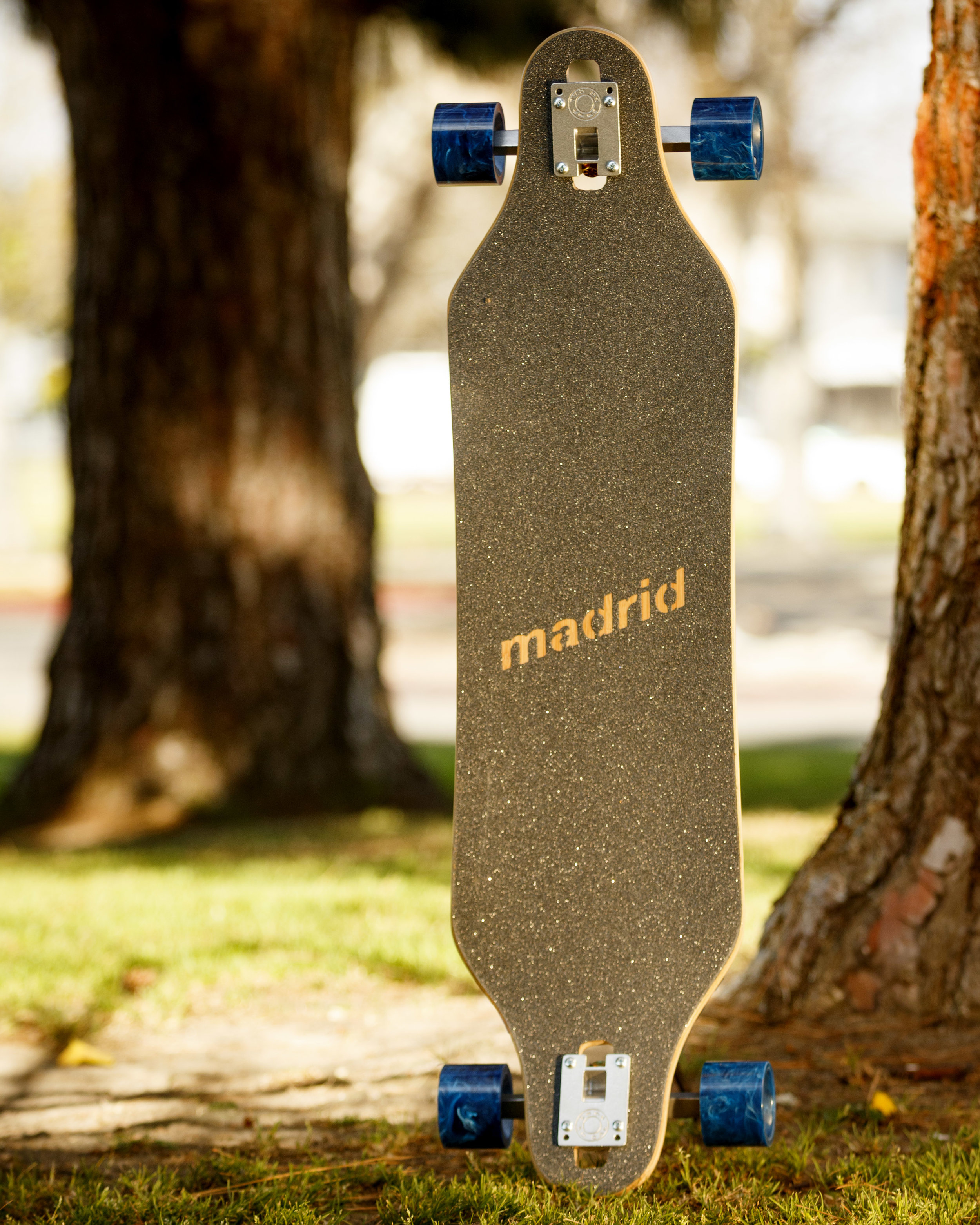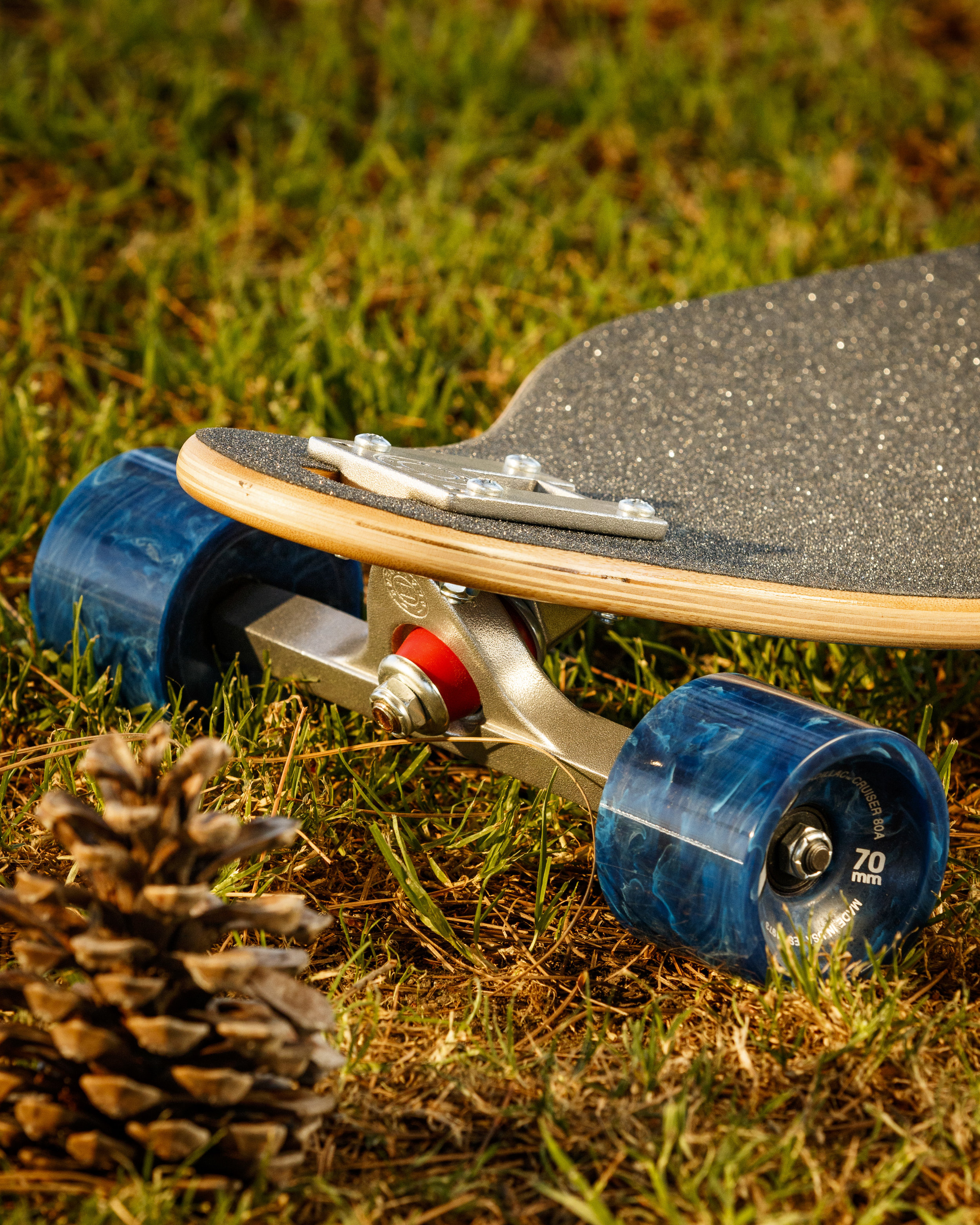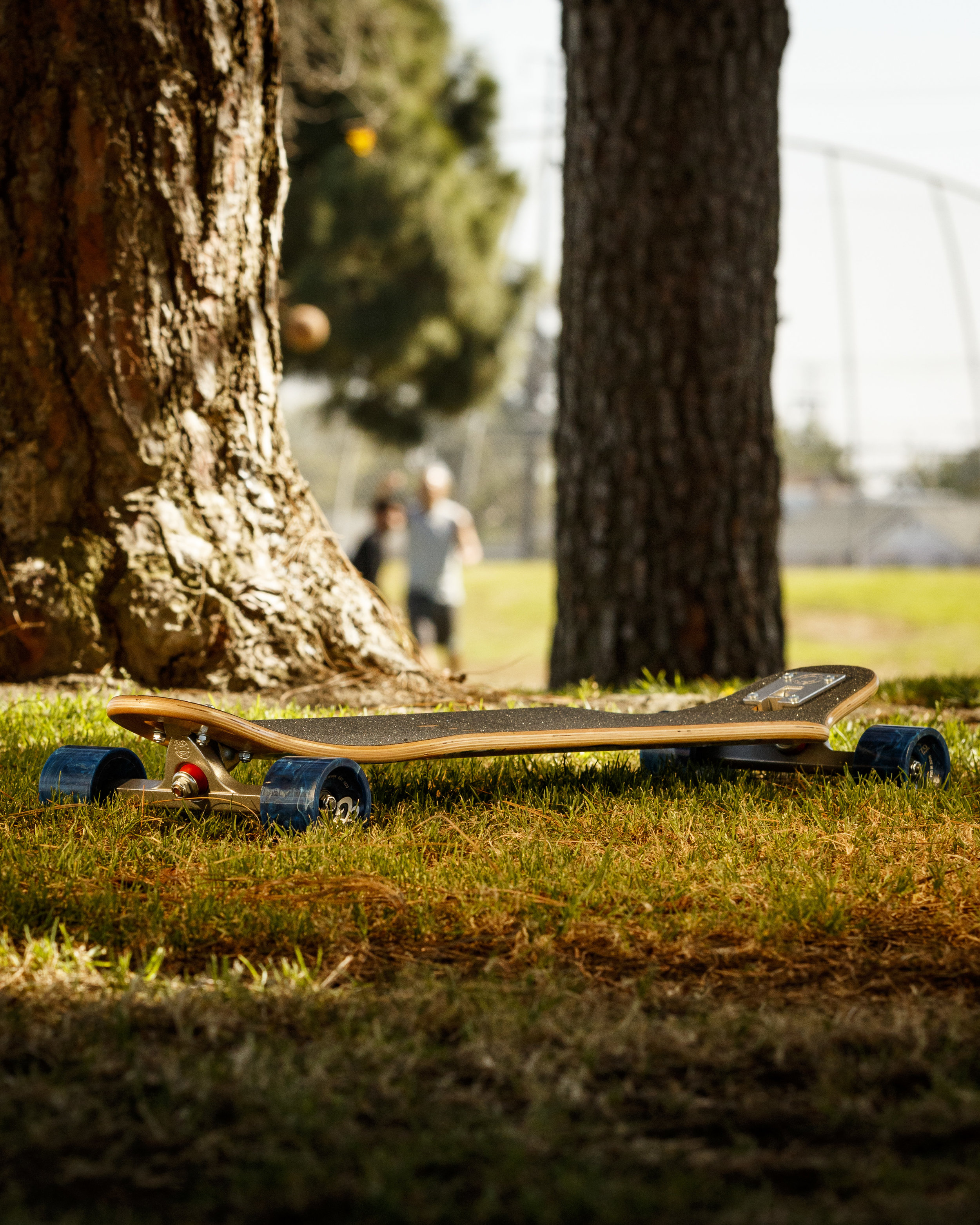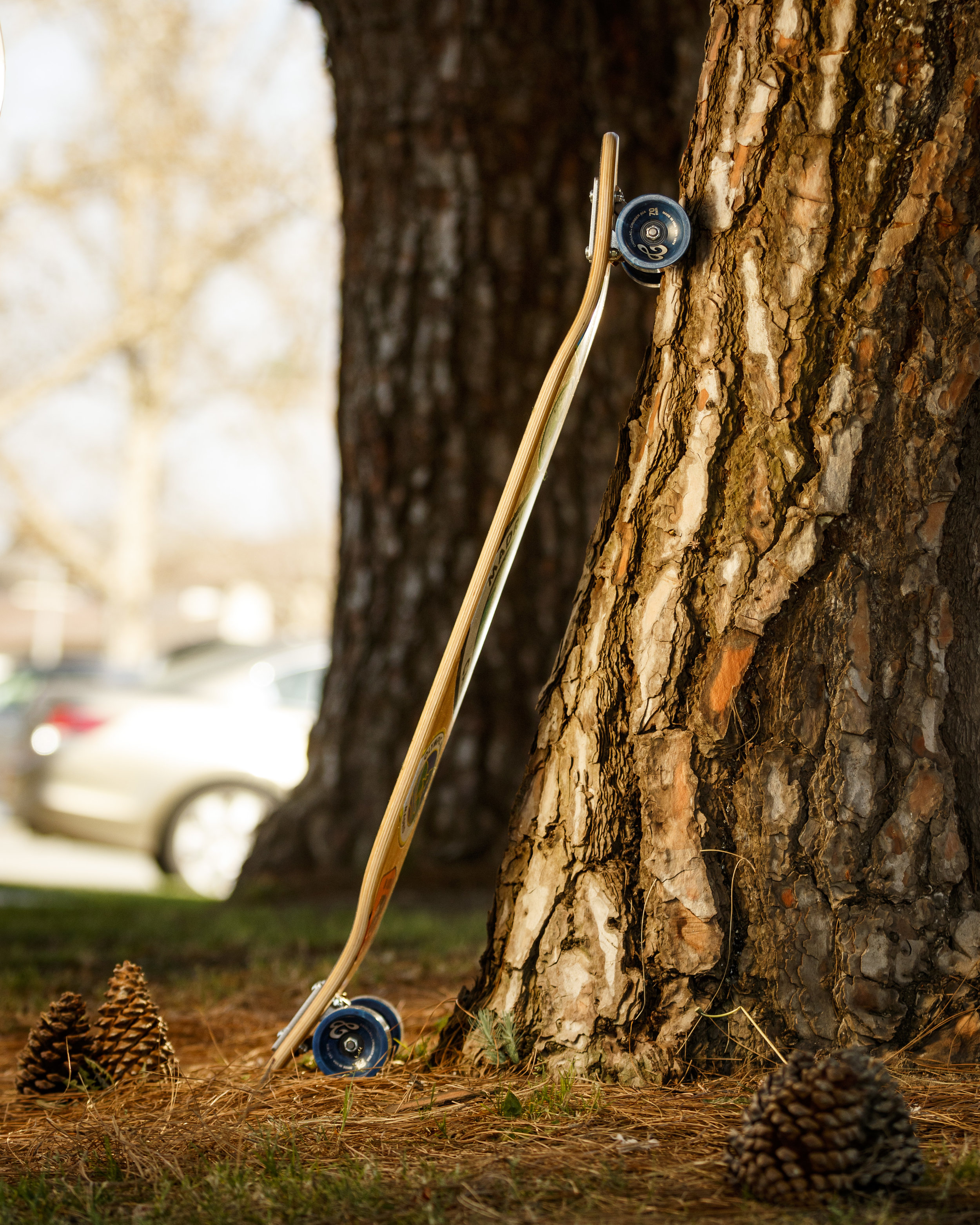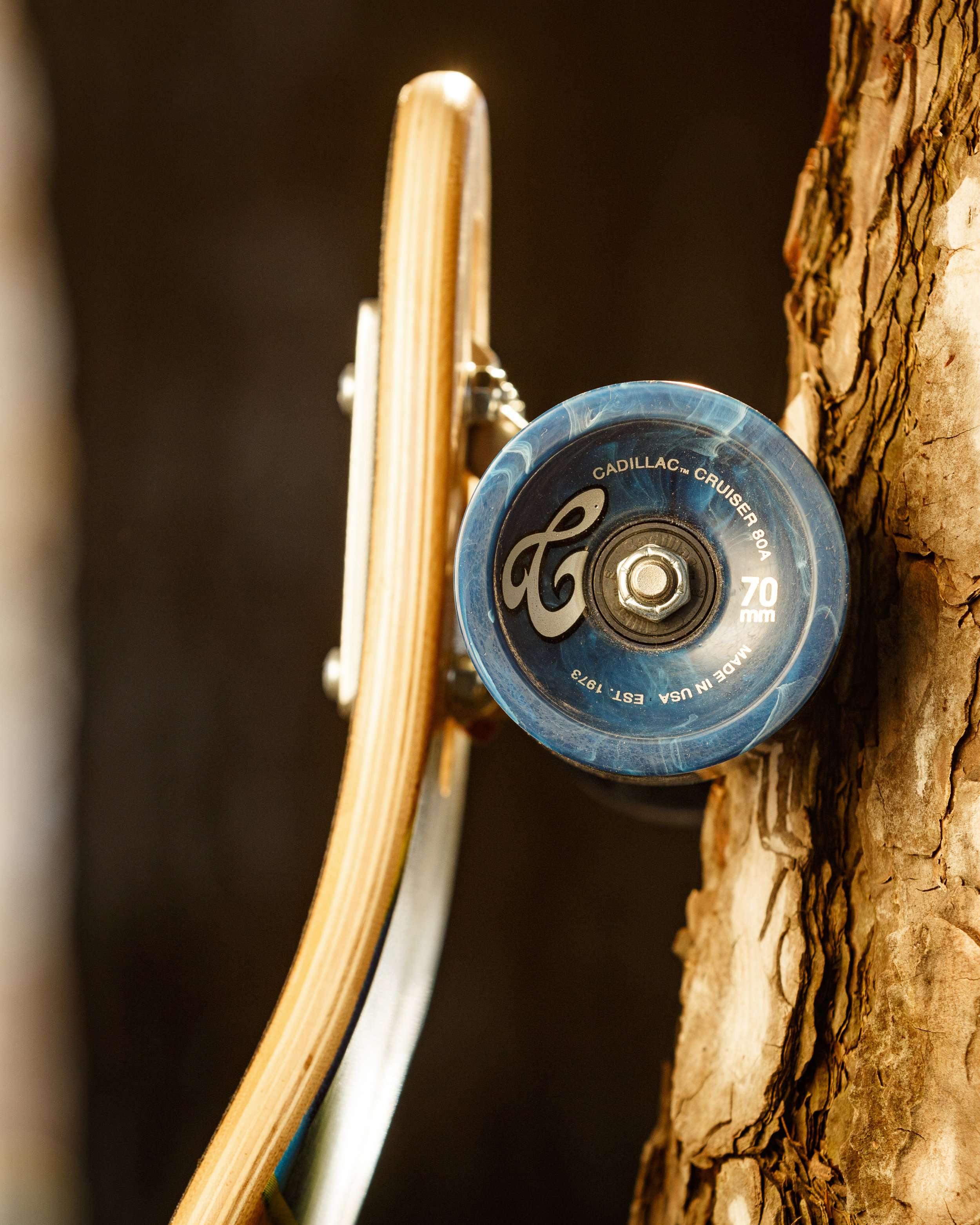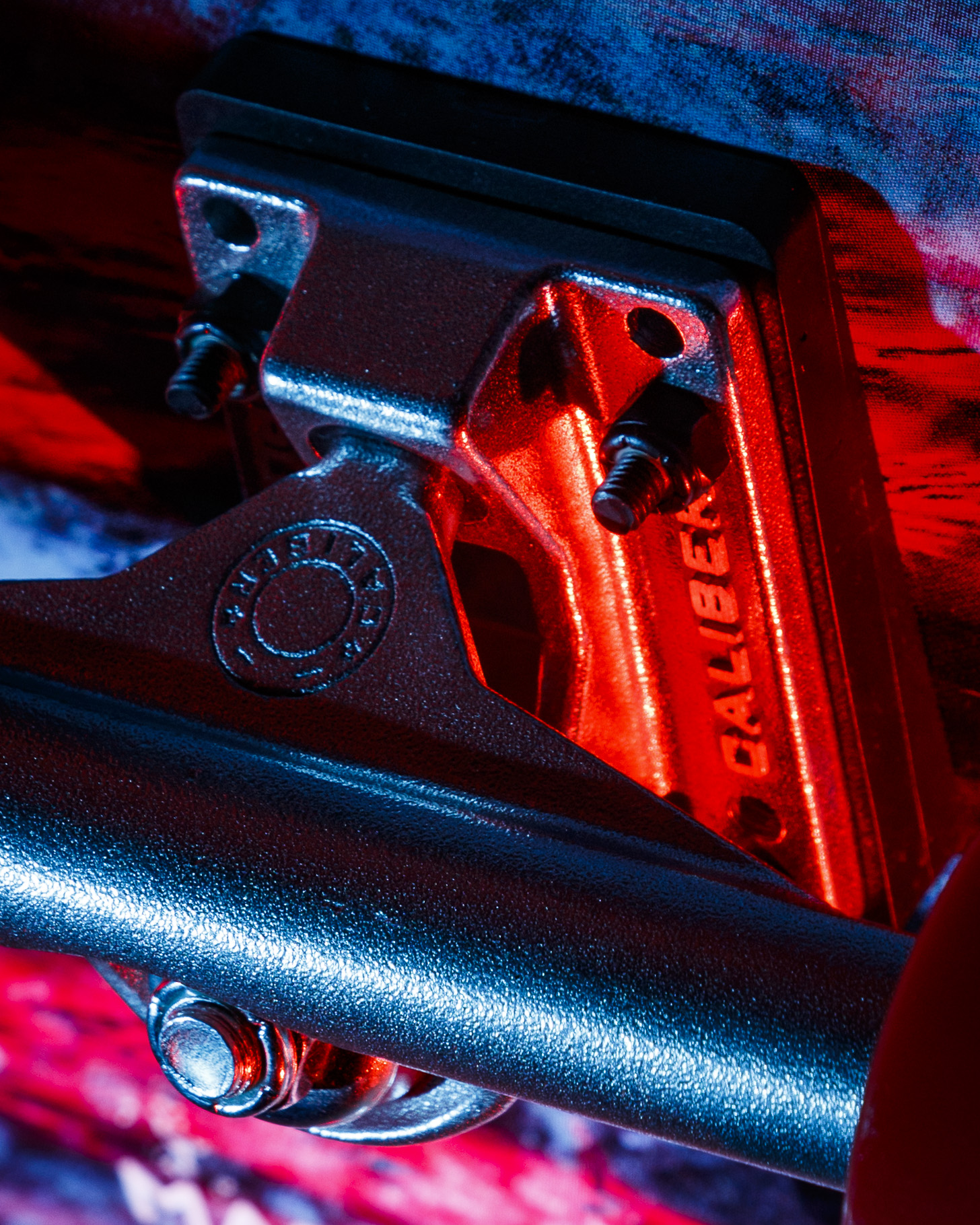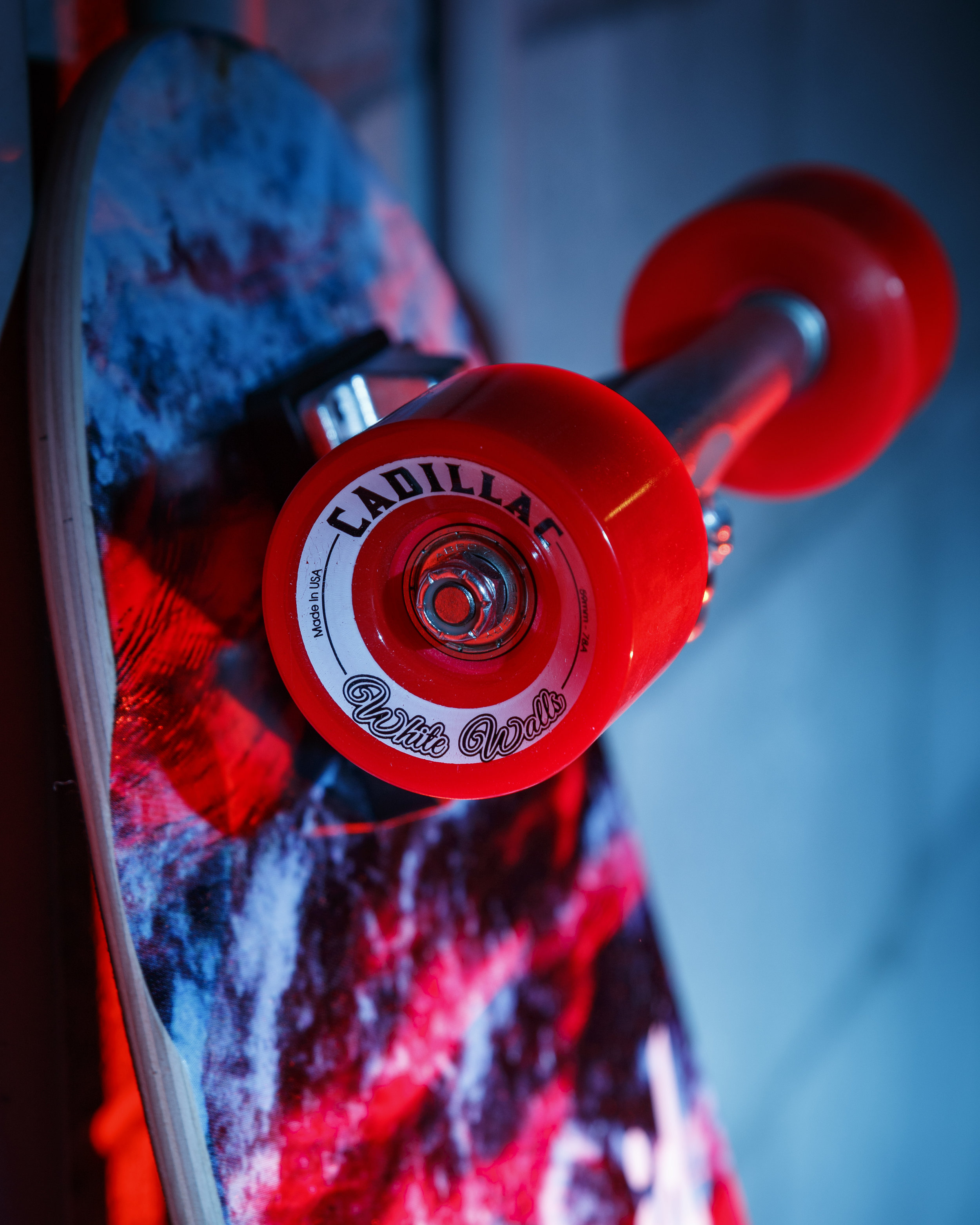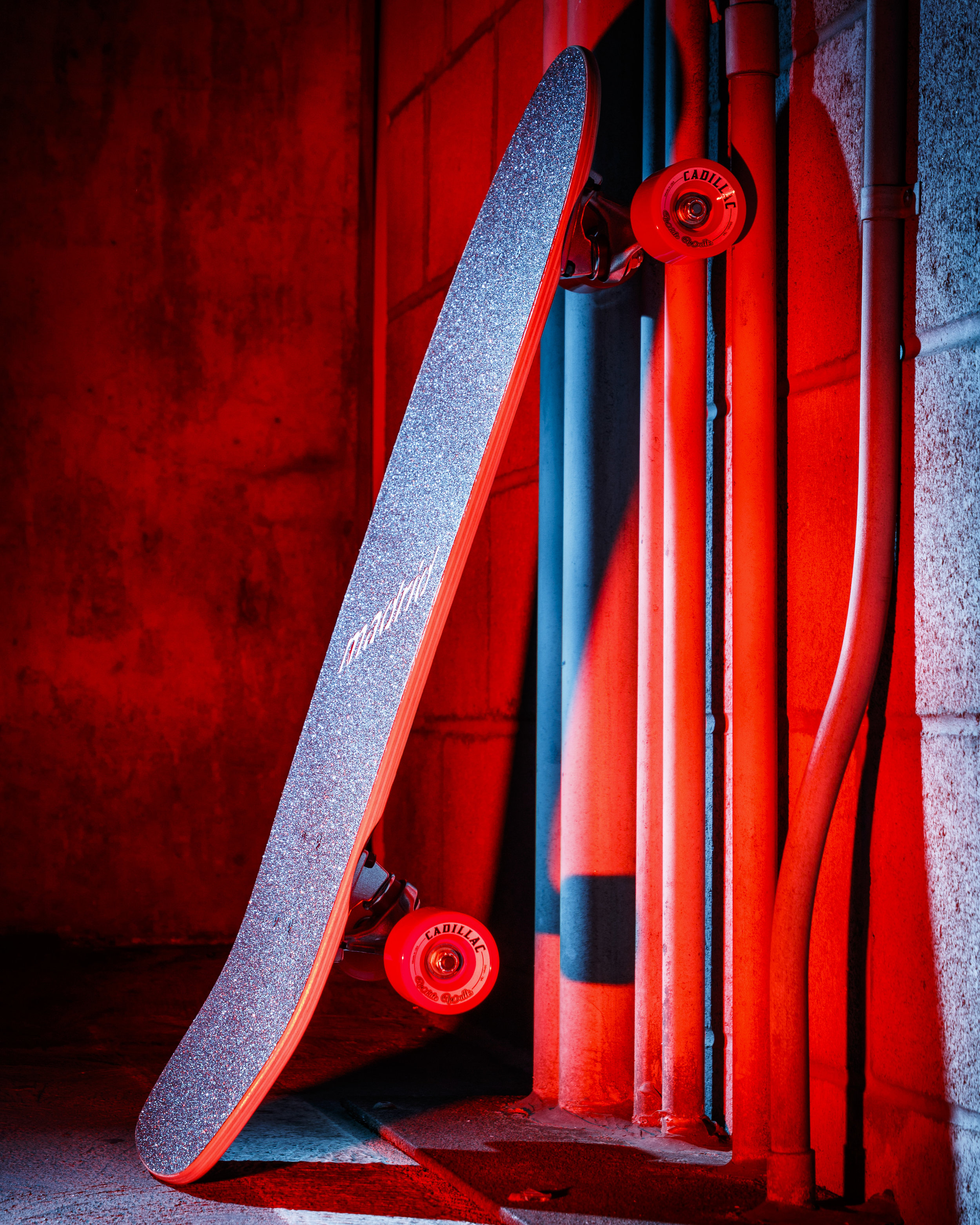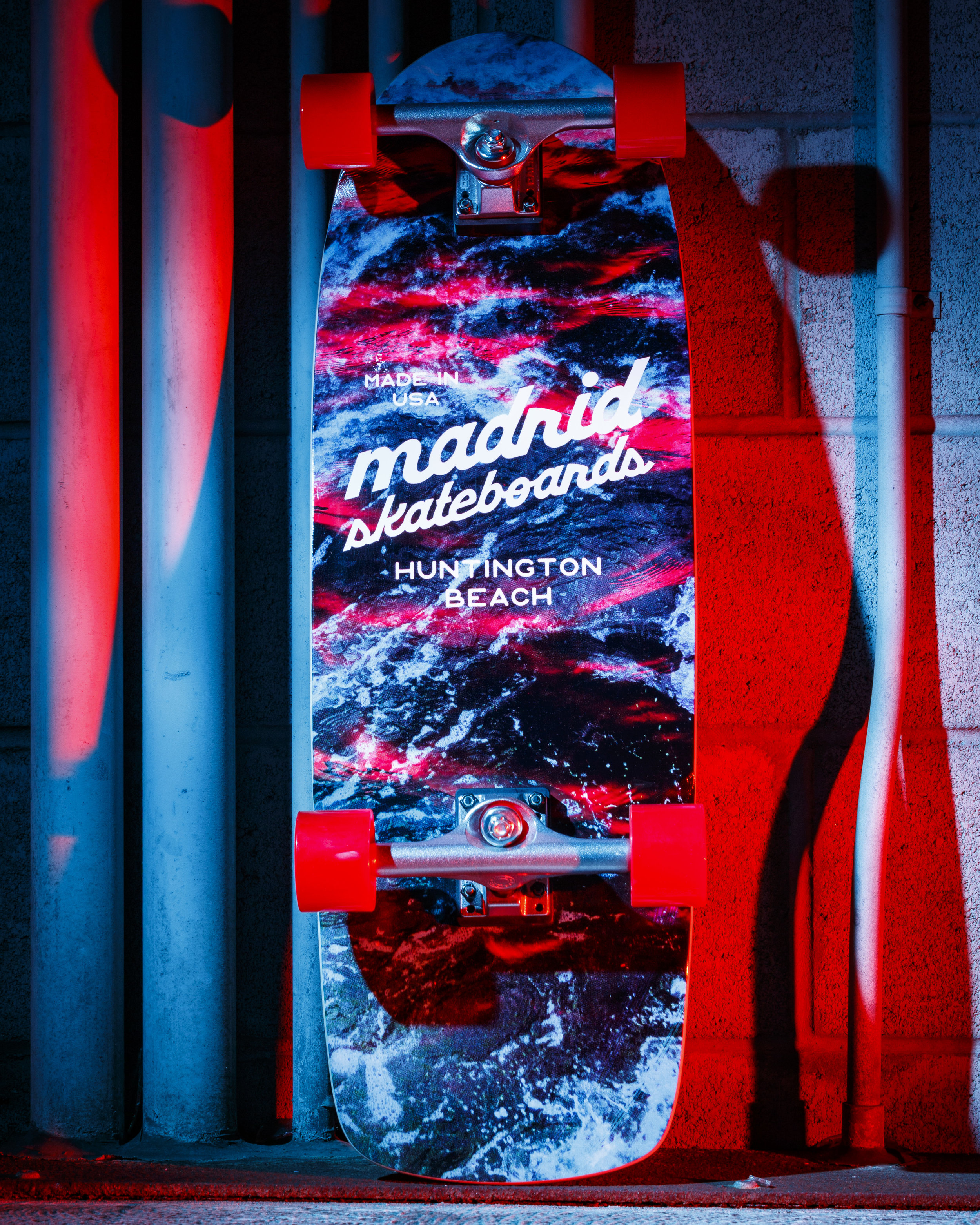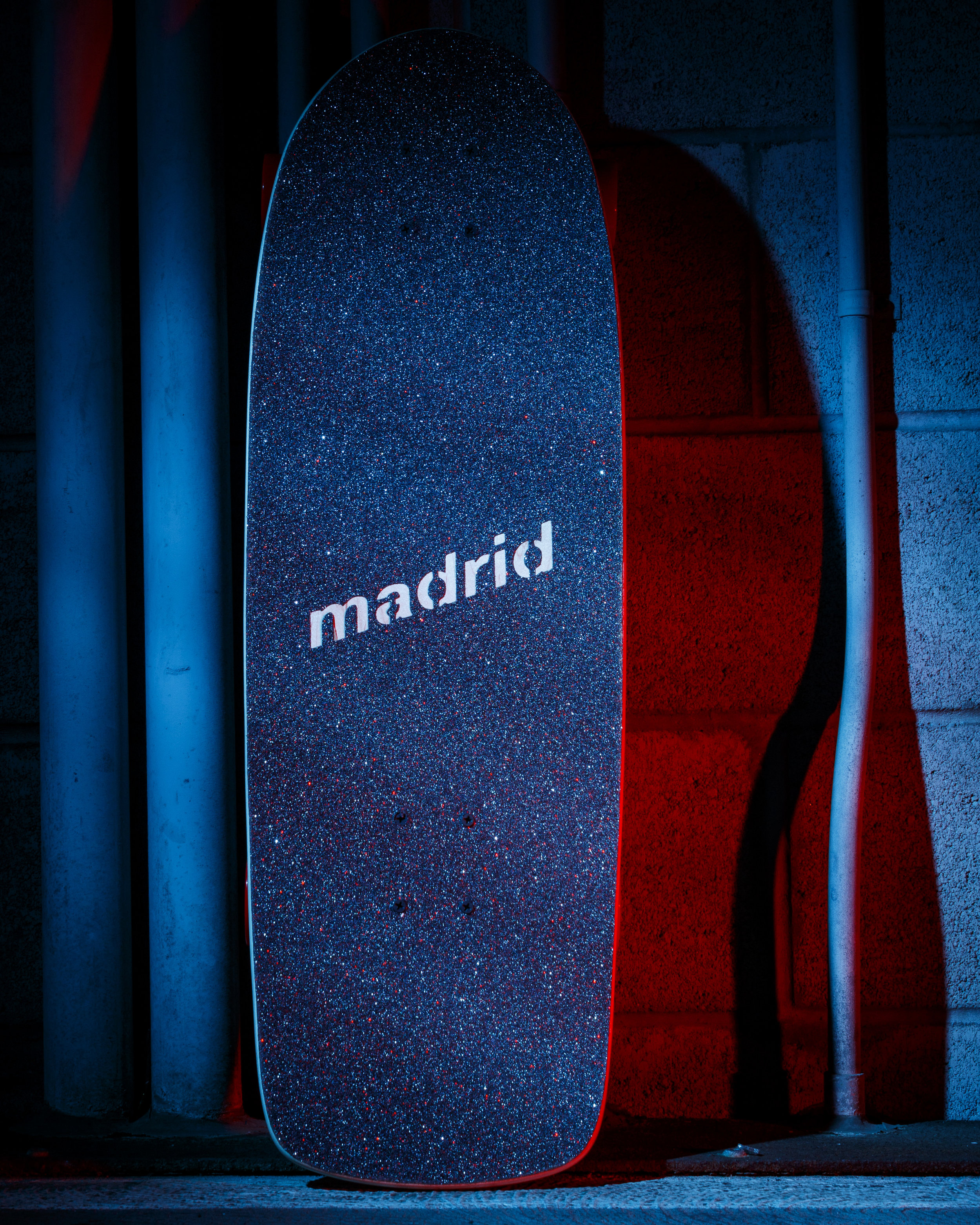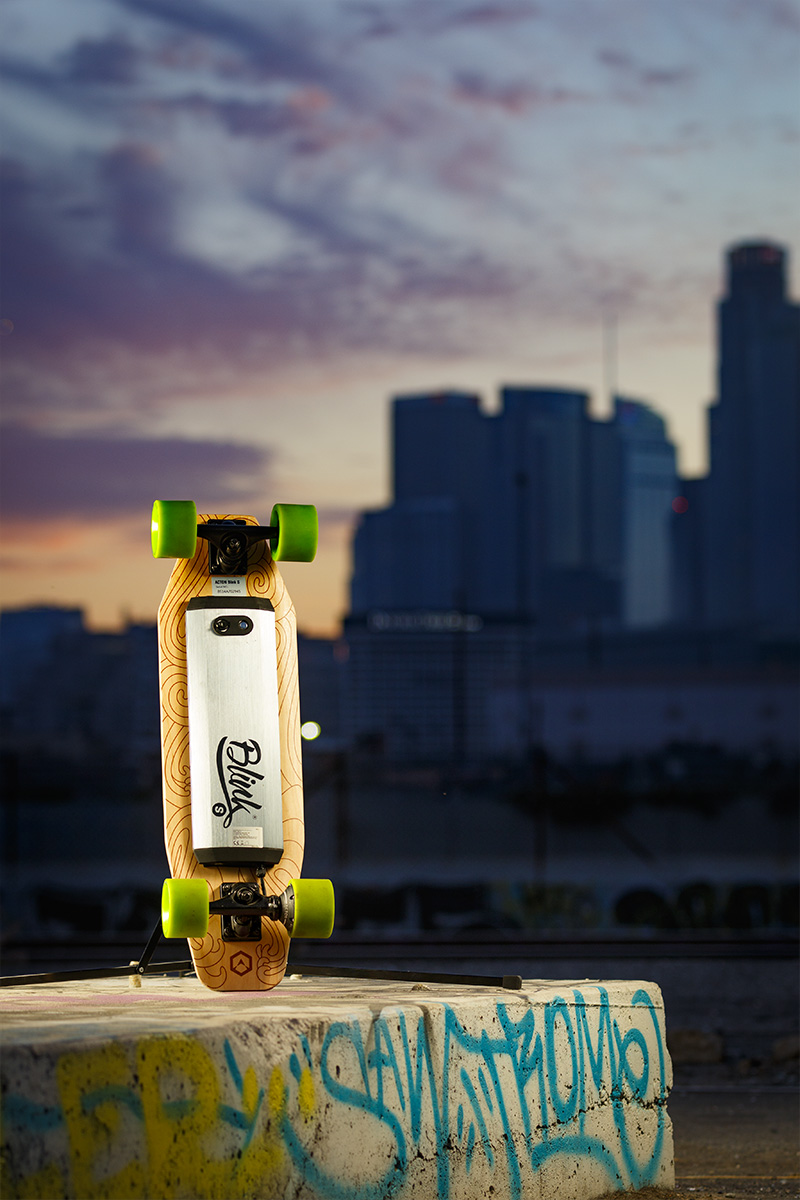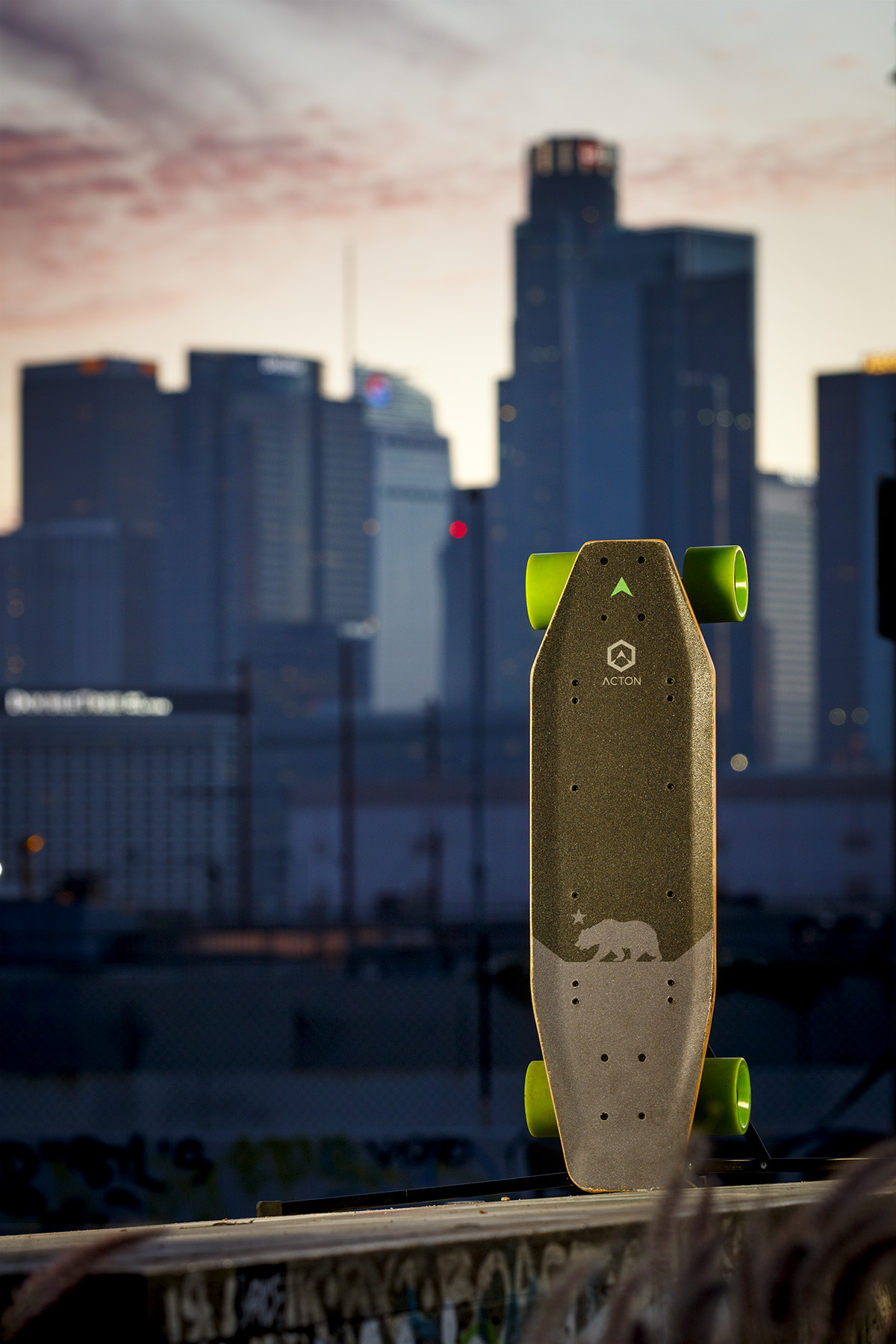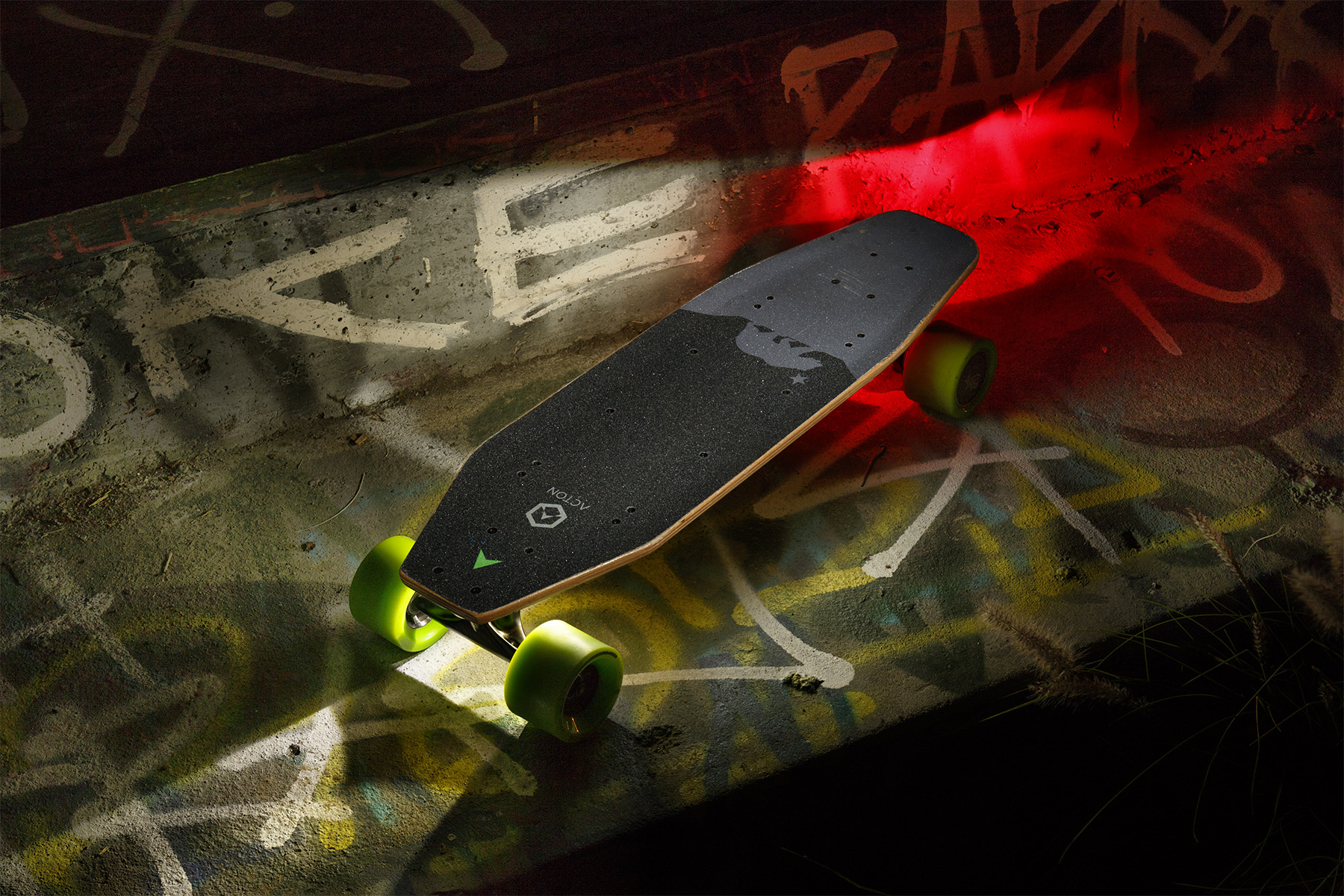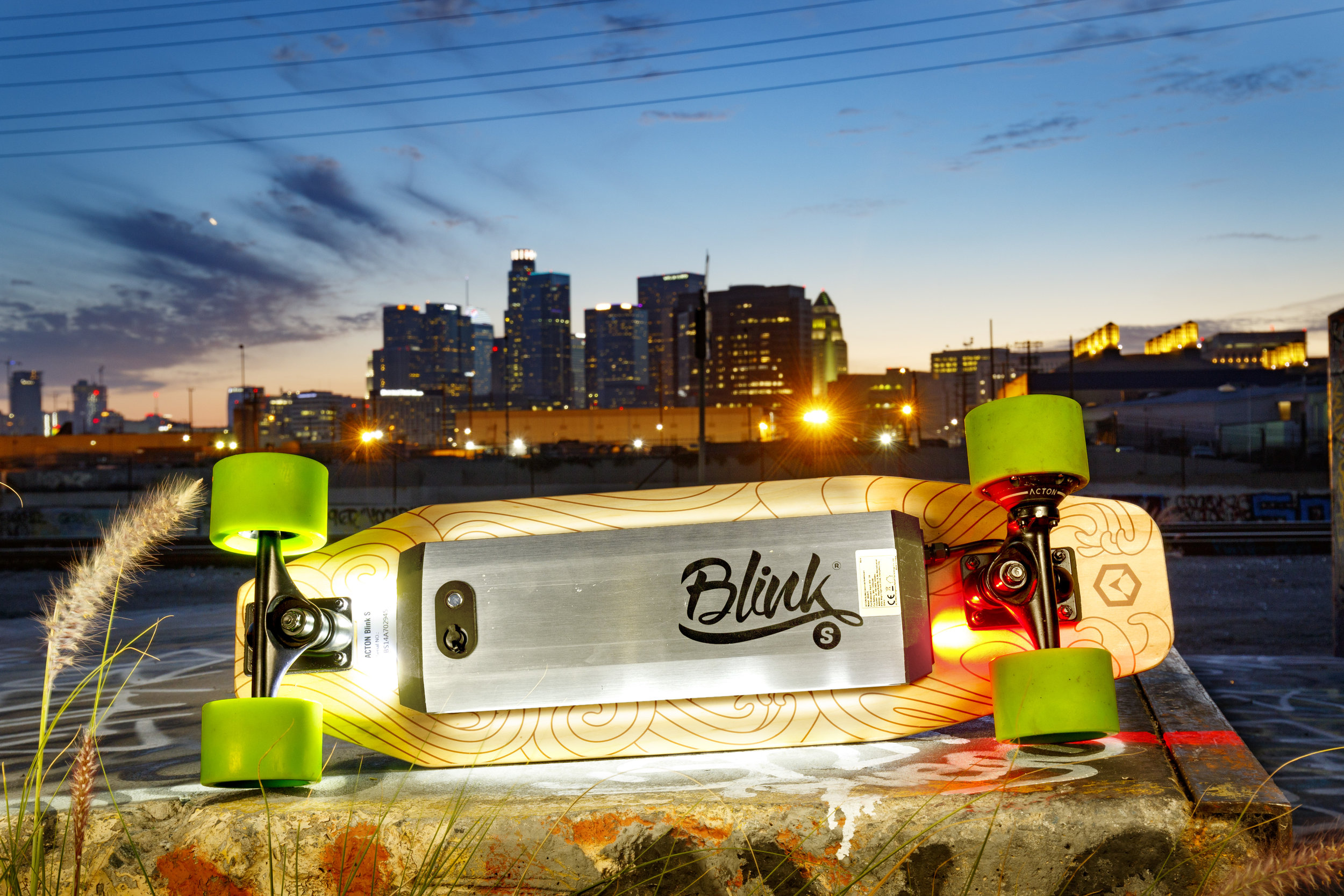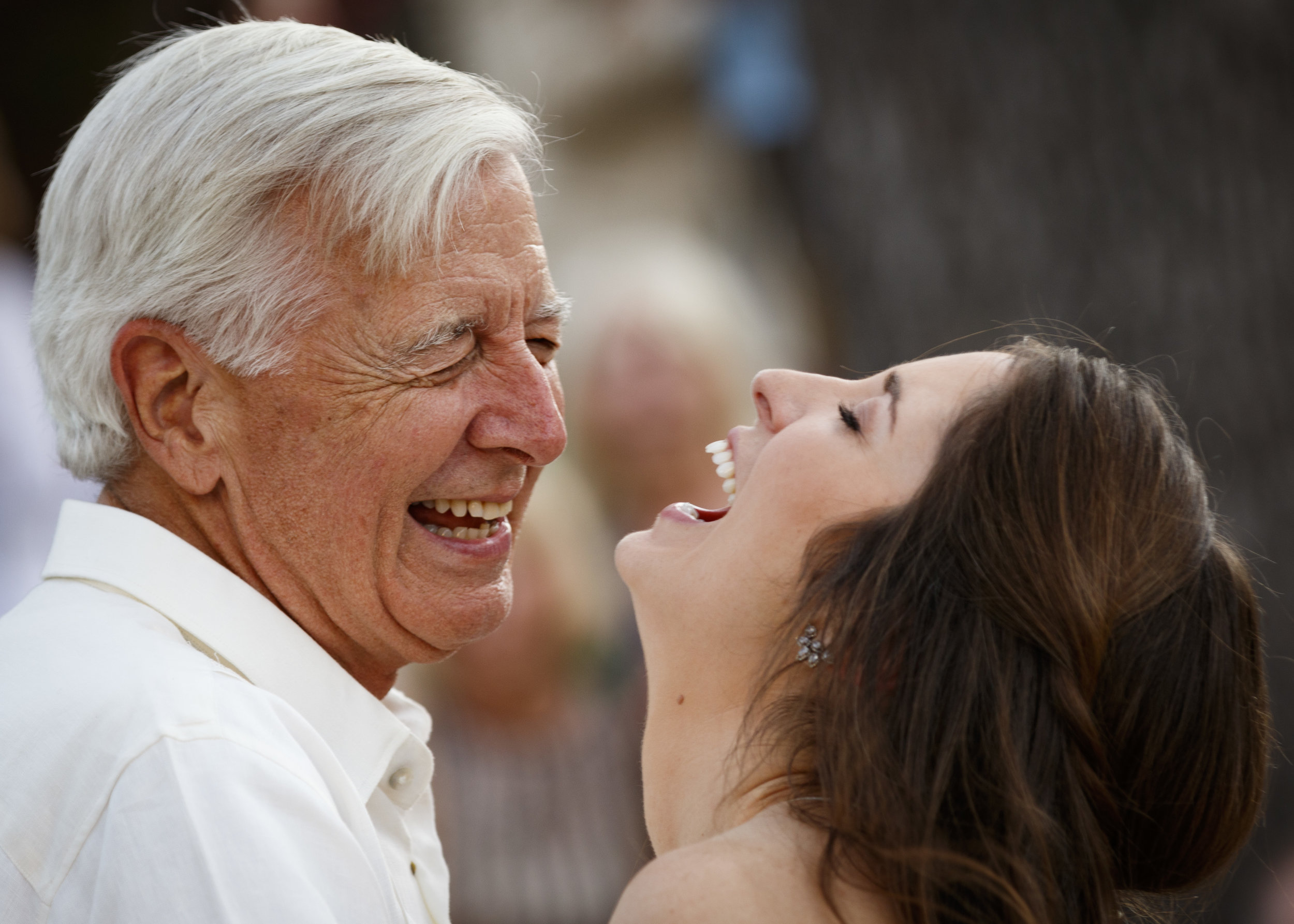SITUATIONAL AWARENESS, SKATING COMPETENCE, AND RISK MANAGEMENT are the keys to avoiding uncontrolled crashes. I will attempt to lay out best practices here.
SKATING COMPETENCE - This guide presumes that you know how to control yourself on your skateboard at speed. You should know how to predrift both ways to slow down for corners, footbrake at speed, and maintain your lane all the way through any corner. If you do not yet possess these skills, session corners to work on them before you try to go bomb down mountain roads.
Author’s note: long standup slides on a straight hill do not necessarily prepare you for real downhill riding. Make sure you know how to slow down and take a line, not just slide far.
This also presumes that your gear is appropriate for high-speed riding and in good working order. You need wheels that grip, a full set of mounting hardware, trucks and bushings that are stable at speed, and bearings that aren’t going to explode from neglect.
RISK MANAGEMENT AND SITUATIONAL AWARENESS - Learning how to control a skateboard is relatively straightforward. Learning how to evaluate the potential hazards on a given road, adjust your skateboarding to prepare for the worst-case scenario and skate safely is much more nuanced and difficult.
WHEN TO SKATE - Ideally, you want to skate at times with the least traffic, usually very early mornings at first light (dawn patrol) or during the day on weekdays. Avoid skating during busy times, usually rush hours and weekend daytimes. Individual roads might have peculiar busy times, so it’s worth doing all the research you can.
EVALUATING THE HILL - When you arrive at a road you’re planning to skate, drive up from the bottom and have the person in the passenger seat check for gravel, wet pavement, and other debris in the road. If you see any potentially hazardous gravel or rocks, pull over and kick them out of the road.
Note the location of driveways, intersections, parked cars, pull-outs and other places where you might encounter a car and approach these sections of road with the knowledge that you may have to stop suddenly.
SKATING CONSERVATIVELY - More than anything else, your frame of mind informs the safety of your skateboarding. You want to skate conservatively and always be prepared for the worst case scenario.
If you approach your open-road downhill skating with a “fuck it, I’m just going to go for it 100%, not think about the consequences, roll the dice and hope it works out” mindset, you are going to get hurt or killed. This mindset, which is somewhat useful on closed roads and when you’re skating street or transition, is bad for downhill because the consequences of an uncontrolled crash at high speed are much worse than the potential consequences of slamming at the skatepark or hitting hay at a race. In practice, this mindset is what motivates people to take stupid risks like going into the uphill lane on blind corners.
On the other hand, if you approach your skating with the knowledge that the road will be there tomorrow and that there’s a time and place to push it, you will skate more conservatively and be much less likely to find yourself in a bad situation.
In practice, skating conservatively means chilling out, recognizing the difference between the fast line and the safe line, maintaining your lane at all times, and being ready for spots where you might encounter an unexpected car.
Chill out. There’s no need to go full bore 100% edge-of-control fast on open roads. Slow it down a little and keep it together so you don’t crash. You can go balls-out at events with closed roads and safety precautions.
Recognize the difference between the fast line and the safe line. There’s famous downhill road in Santa Barbara with two very steep right-hand hairpins that uphill vehicles often cut. The fast downhill line is to slide in the uphill lane, dive to the middle of the downhill lane, then fade wide. The safe line is to slide almost to a stop on the inside of the downhill lane, grip up at the apex and hug the edge of the road all the way through, then roll out at running speed.
If you want to take the fast, dangerous line, use spotters. (More on this later.)
Maintain your lane at all times. There is no going into the oncoming lane unless you have a clear view of oncoming traffic, and even then it’s a bad idea. On narrow or undivided roads, stay far over to your side.
Be ready to encounter cars. Most people drive like idiots. Don’t trust drivers to stay in their lane or look both ways before pulling out into the road. It’s better to go a little slower and hug your side of the road than to bounce off a car that was in 2’ in your lane.
Reaction time and physical coordination is critical. Don’t skate downhill when you’re drunk or high.
You need to be able to see and hear what’s going on around you. Protect your eyes with sunglasses or a face shield and don’t ride with headphones.
Be ok with not skating. You’re going to encounter situations where it’s impossible to skate with any reasonable degree of safety. It is ok to say “this is fucked, I’m not down, let’s go to the next spot” or “this traffic is crazy, let’s come back tomorrow at dawn” or “I’m just gonna drive at this spot.”
SLIDE EARLY FOR CORNERS - It’s better to slide early, grip up early and pick up speed as you roll through a corner than to slide too late and go off the road. Sliding early also gives you the time and space to slide more and adjust your line or, if you don’t make it, slide to a stop in a controlled manner, rather than going off the road.
THE IMPORTANCE OF FOOTBRAKING - Footbraking is important for three reasons. First, the overwhelming majority of people have never seen downhill skateboarding and do not know how to read a skater’s body language. When a driver unfamiliar with downhill skateboarding sees you crouching down and putting your hand on the ground, they don’t see someone about to slide the wheels across the pavement to slow down in a controlled manner and skate safely through a corner, they see someone about to crash. Everyone intuitively understands that dragging your foot along the pavement will slow you down.
Second, footbraking allows you to slow down gradually and in a straight line, making it extremely useful for pack riding and dealing with cars. Coming up on your friend into a tricky corner with only one line? Drop a little footbrake to put a little distance between you. Unexpected car? Footbrake to the side of the road.
Third, footbraking is actually a great way to slow down. Once you get the hang of it, footbraking will slow you down just as quickly as sliding.
DEALING WITH CARS - The overwhelming majority of people driving cars have never seen downhill skateboarding and are freaked out by the sight of kids on longboards whizzing past them at 40mph on a narrow mountain road. This is a completely rational response to what we do. I still get nervous when I encounter unexpected skaters on the road.
The best way to deal with cars is to avoid them completely. Pick a low-traffic time to session. When it’s time to drop in, wait for a long gap in downhill traffic.
If you catch up to a car driving downhill, slow down or stop. You don’t know if and when they’re going to jam on the brakes and you don’t want to slam into the back of an immovable object. Passing cars is dangerous and not that cool (they can always step on the gas and leave you in the dust). Waiting a couple minutes to finish the run is not that big of a deal. The pavement is not going anywhere.
If a car catches up to you, footbrake to the right-hand side of the road* as soon as possible and let them pass. (At the bottom of the run, yell at the shuttle driver for allowing a car to pass.)
*Not applicable in left-hand traffic countries.
USING SPOTTERS is a great way to go fast relatively safely on an open road. A spotter is someone who hangs out on a corner, watches for oncoming cars and uses arm signals or flags to tell skaters whether or not the corner is clear.
If you’re spotting, keep your attention focused on uphill traffic. You are not there to watch your friends skate. You are there to keep your friends from getting hit by a car.
Stand where skaters can see you and you can see oncoming traffic.
If no car is coming, signal a clear corner by waving your whole arm in a circular motion or using a green flag until all skaters have passed through the corner.
If a car is coming, hold one arm above your head, palm out or wave a yellow flag.
If a big truck is coming or the road is impassable around the corner and skaters need to stop, hold your arms in an X over your head or wave a red flag.
THE SHUTTLE/CHASE CAR
When it’s your turn to drive a run, you have two jobs: first, you’re the sweeper. You make sure everyone gets down ok and pick up anyone who, for whatever reason, cannot or does not want to skate all the way down the run. If someone crashes, you make sure they’re ok and pick them up if they aren’t.
Second, and most importantly, you are the shield that protects skaters from downhill traffic. No matter how closely you’re being tailgated, you do not ever pull over to allow cars to pass. Should someone pass you in spite of your efforts, you should make every effort to inform the skaters by honking the horn.
RIDING IN GROUPS- Given the capacity of most passenger vehicles, you’ll almost always be dropping into a hill with at least 2-5 other riders. Nobody wants to get crashed out by another rider doing something dumb, so some etiquette is in order.
Open road riding is not a race; the goal is to make it down and have a good time, not beat your friends to the bottom. Ain’t nothing wrong with chilling in back.
Be aware of other riders around you. If you’re coming up behind someone, clap or give them a touch to let them know you’re there.
Don’t kick in first if you’re the slowest rider. You don’t want everyone passing you or struggling to stay behind.
If you’re thinking about making a pass, make sure you’re going to be able to stay in front: don’t do that make-the-pass-and-immediately-airbrake thing.
If you’re going to bump someone, be gentle and make sure they’re ready for it.
Once again, the key here is to chill. There’s a time and a place to rage. You can get your fill of insane pack riding at at Maryhill Freeride. There’s no need to go three wide through blind corners on open roads.
WHEN SOMEONE CRASHES You can do everything right and still crash due to factors beyond your control. I am not qualified to give medical advice, but I urge all skaters who ride downhill to get trained in first aid and keep a first aid kit in their car.
In the event of a bad crash resulting in serious injury, the very first thing you should do is call 911 and tell them the truth about what happened so they can tell you want to do and send professional help. Your friend’s health and safety is more important than your skate spot.
CONCLUSION: Downhill skateboarding inherently dangerous, but it’s a lot less dangerous if you respect the road and make smart decisions about when, where, and how you skate. Being aware of your surroundings, recognizing and managing risk, and skating conservatively will allow you to skate downhill as safely as possible.












